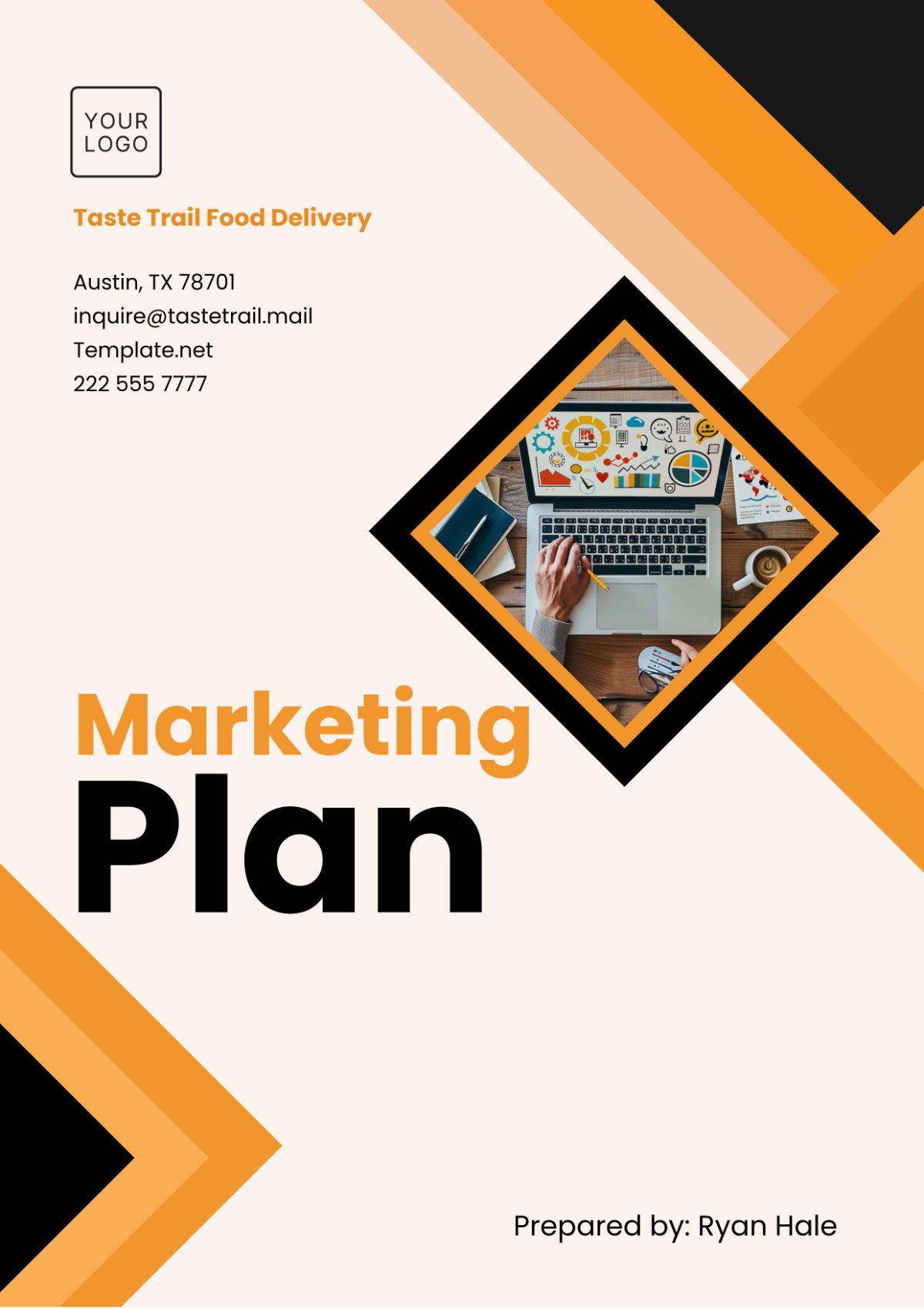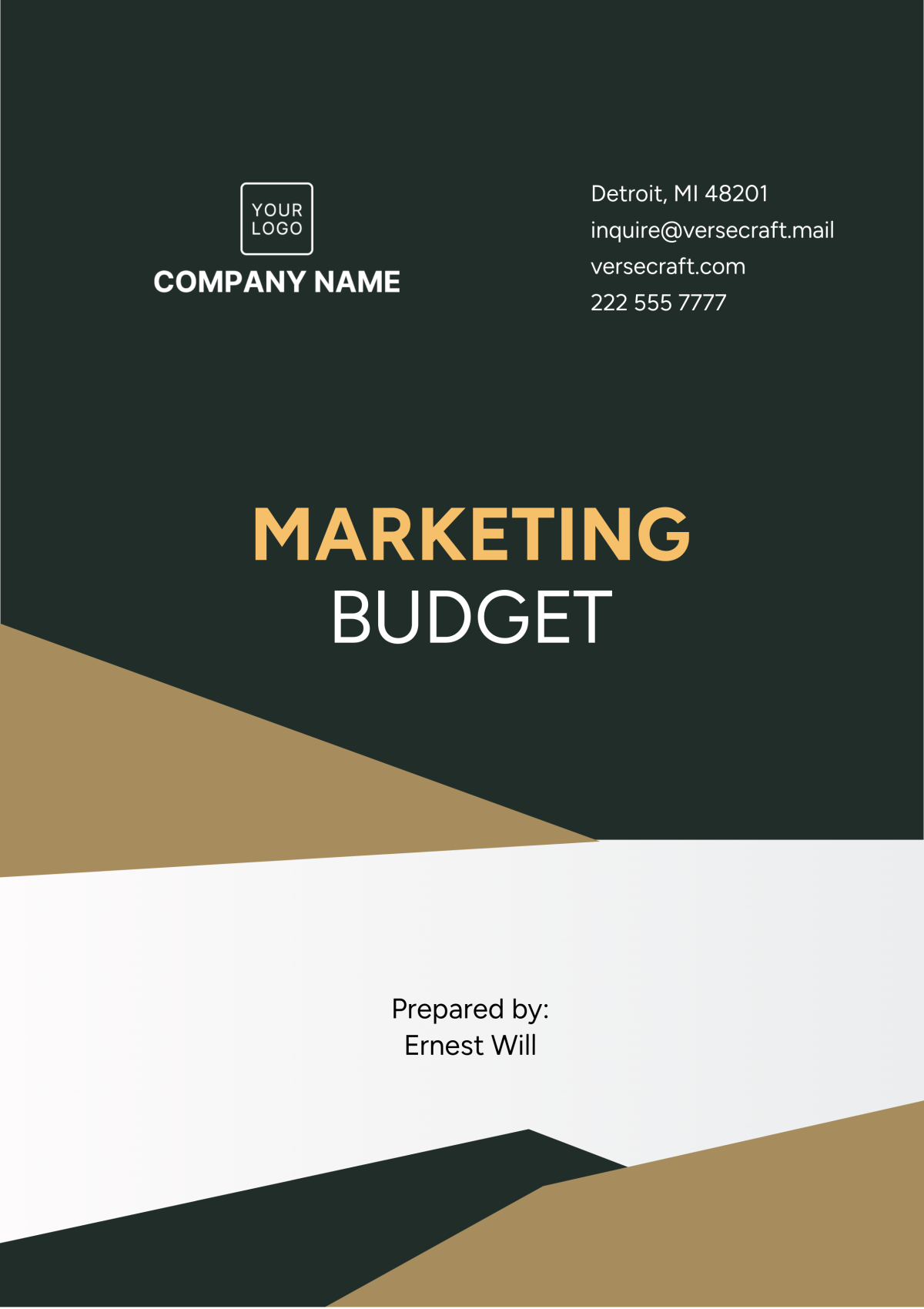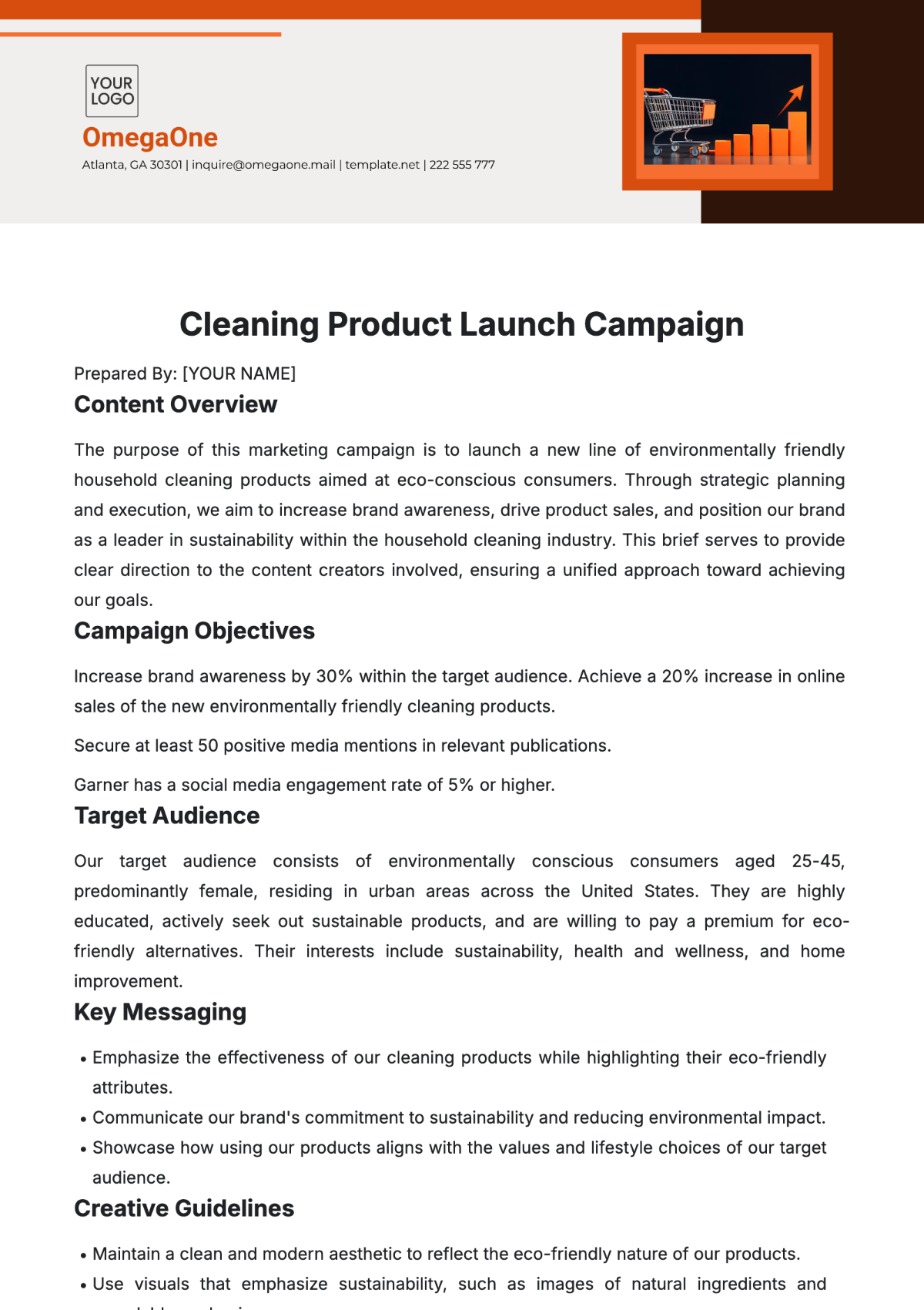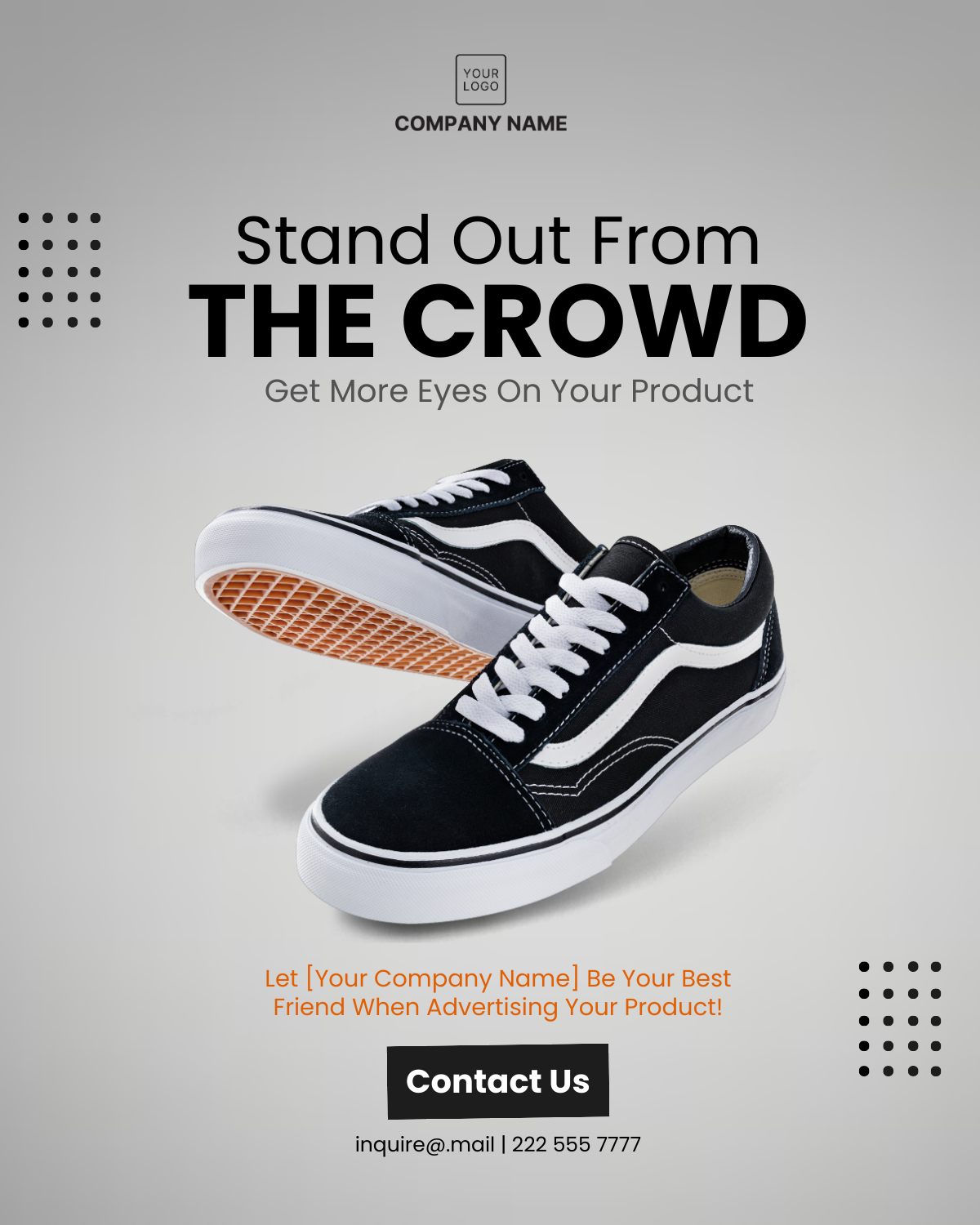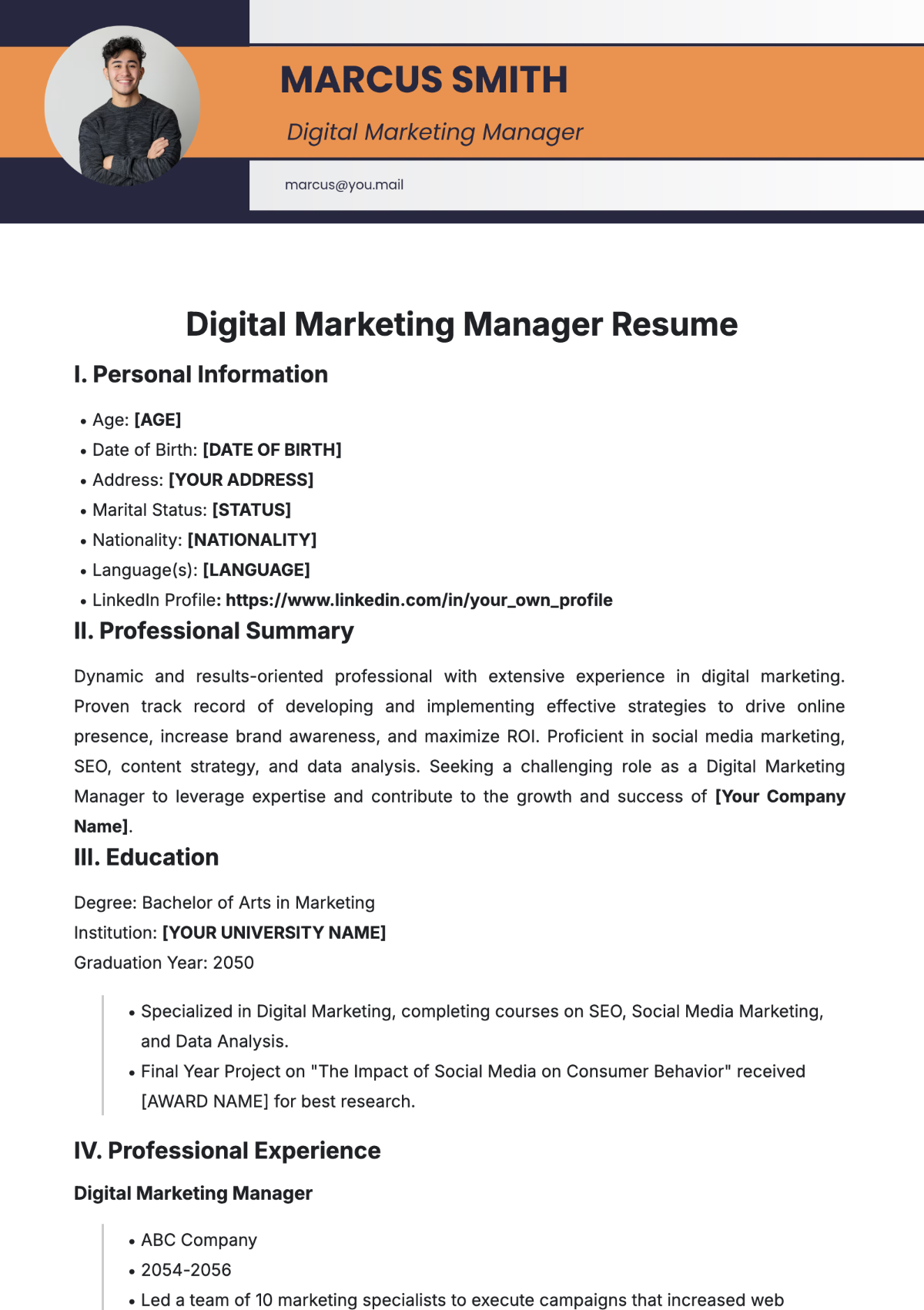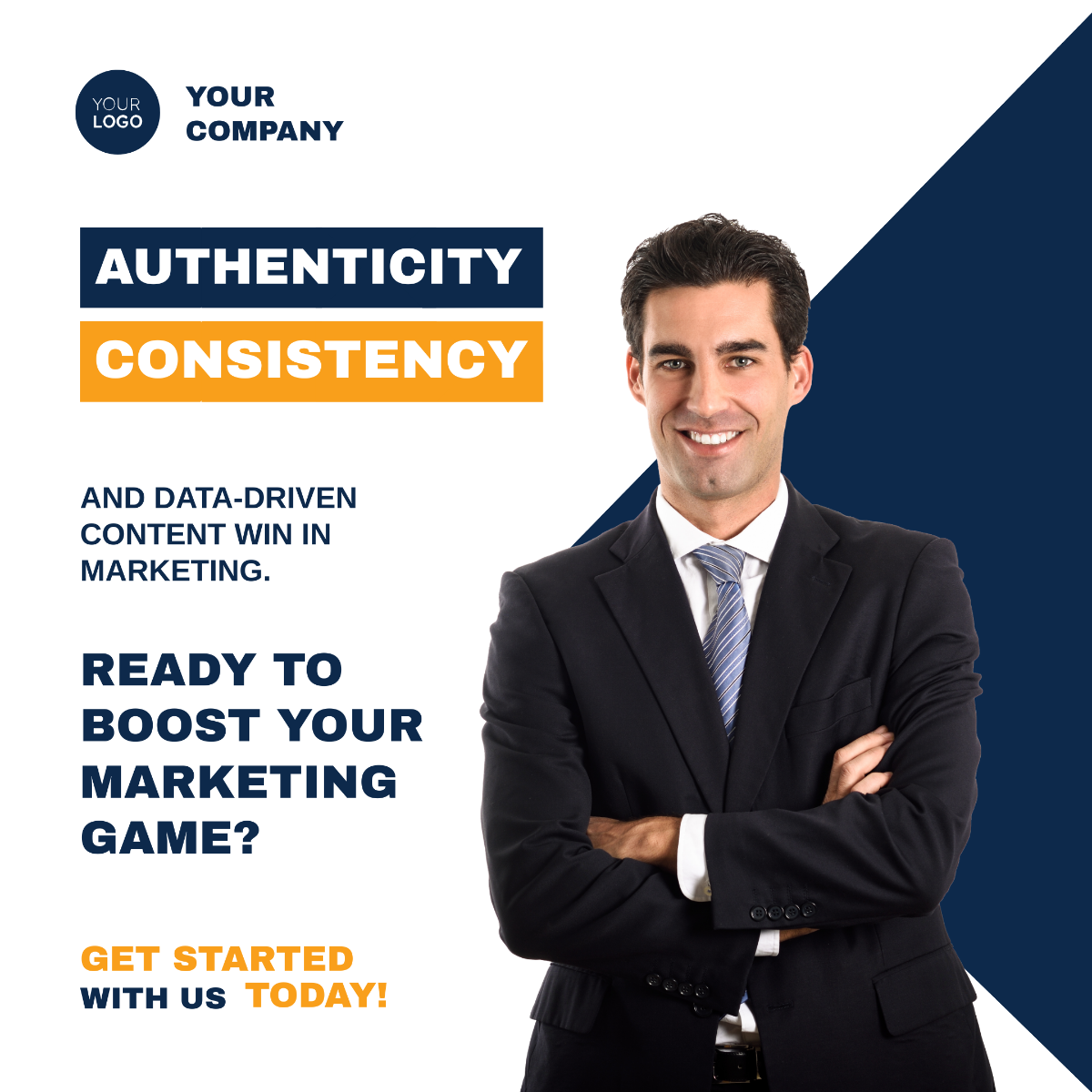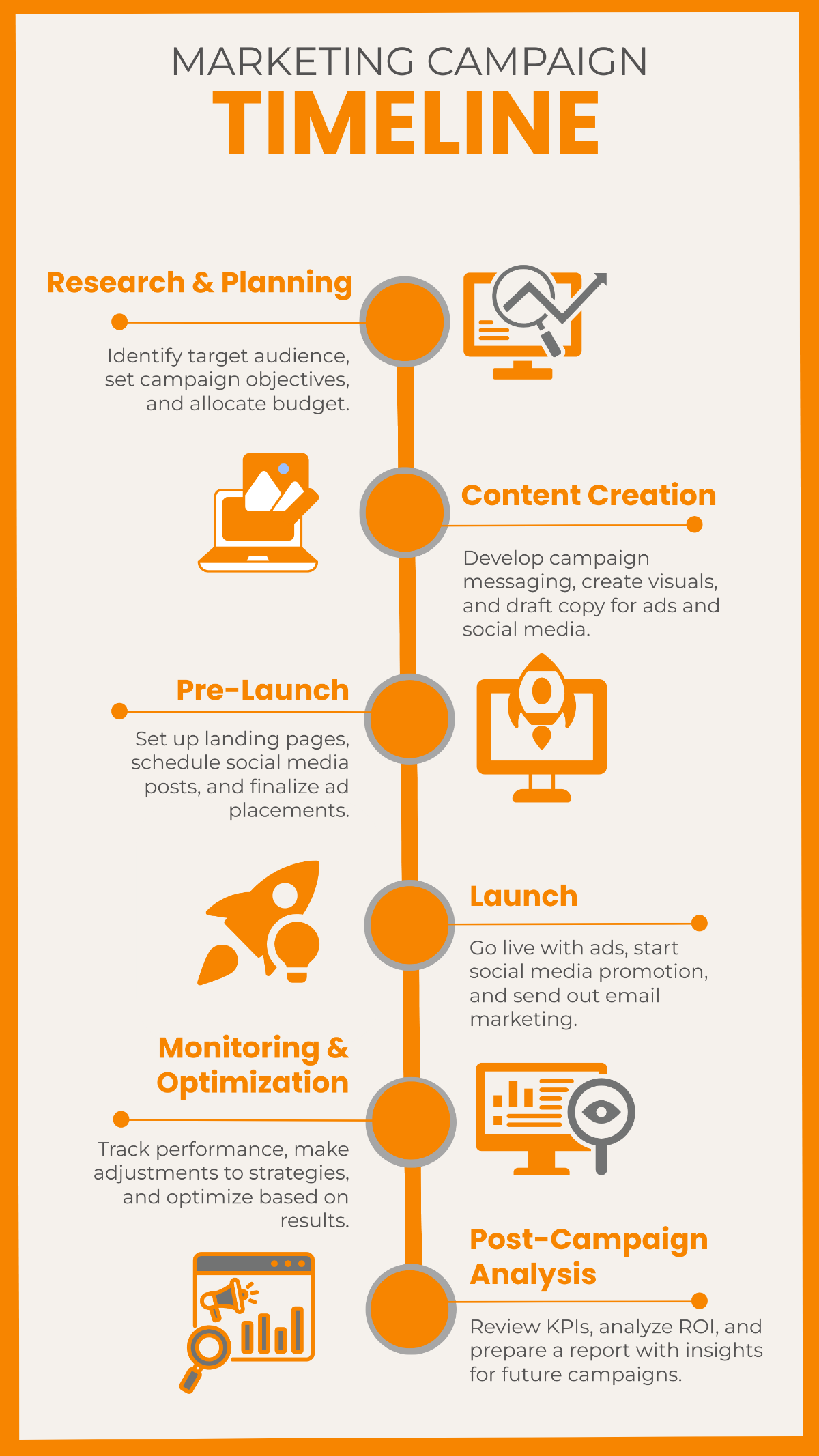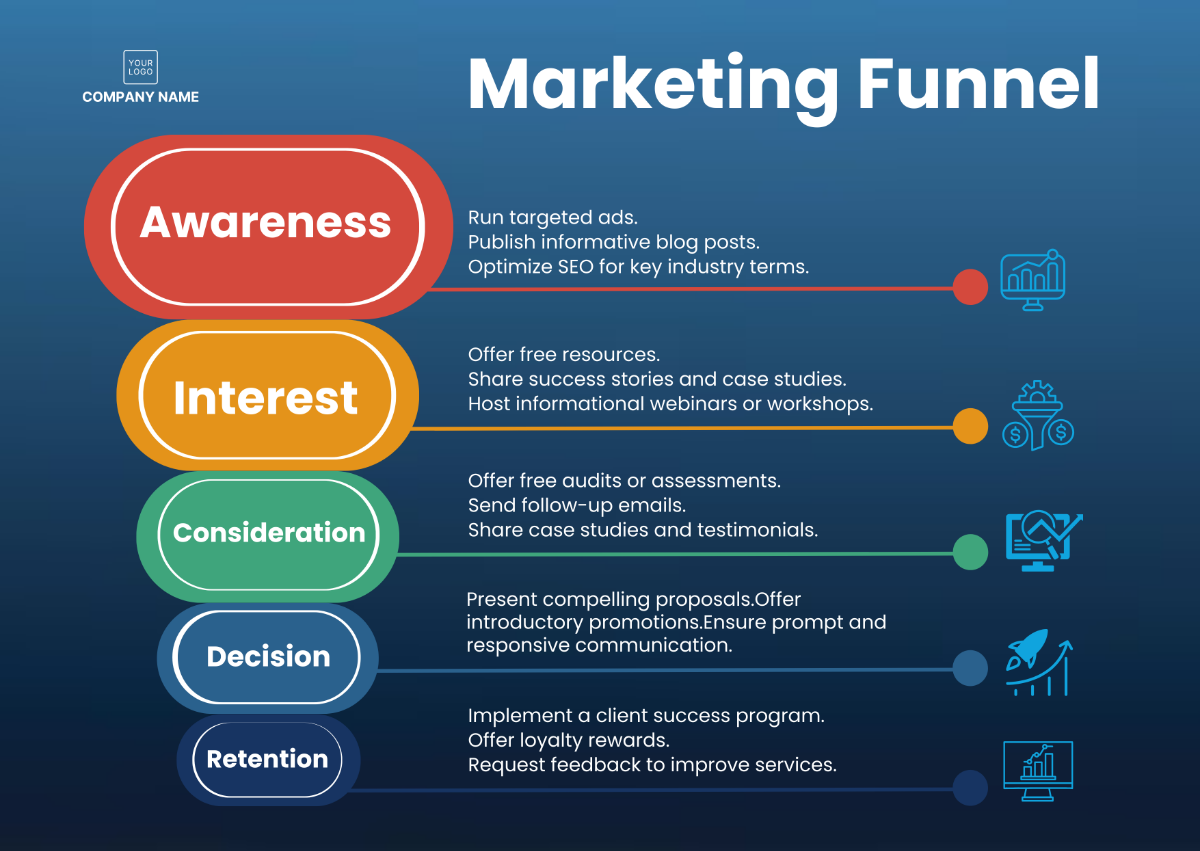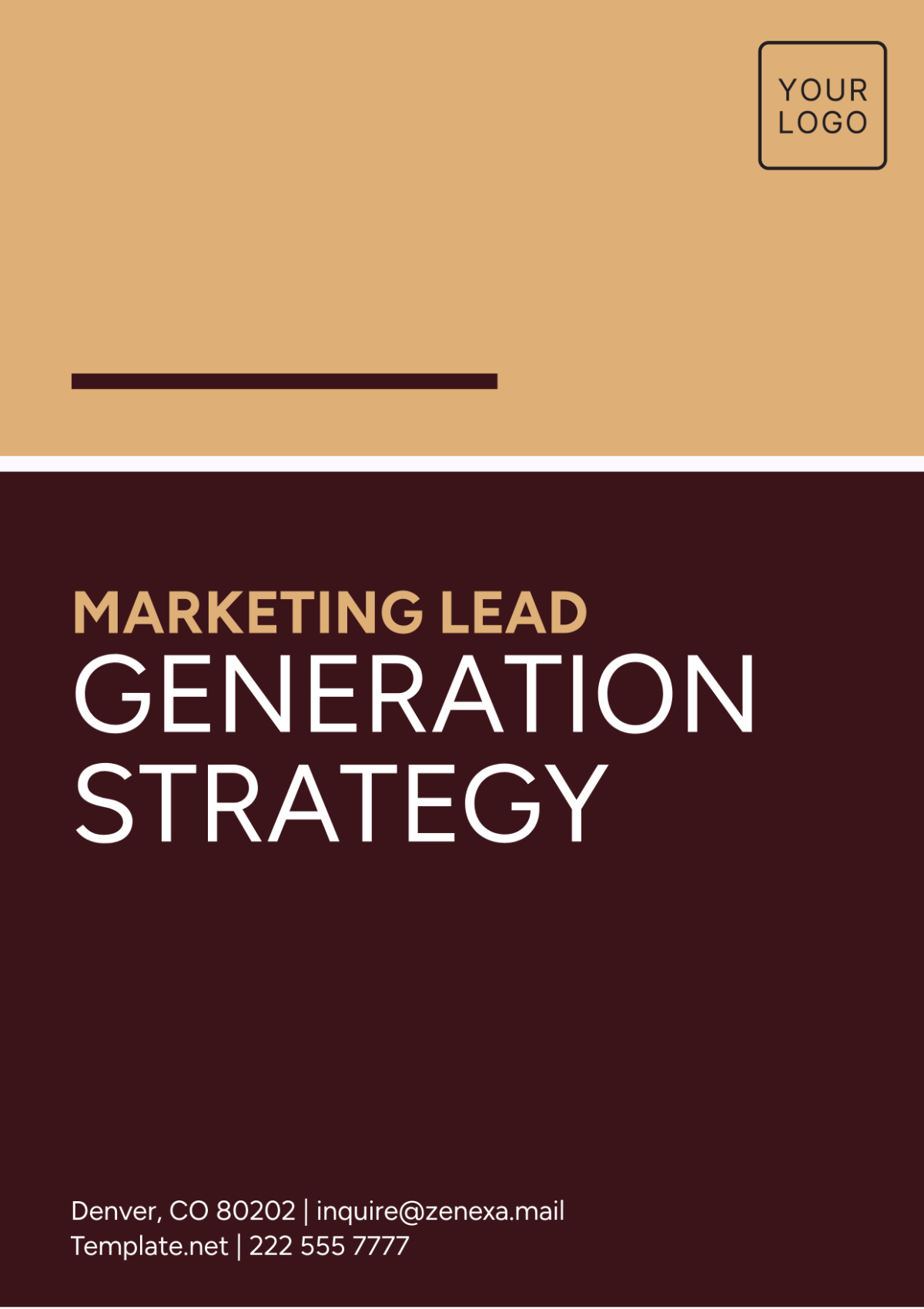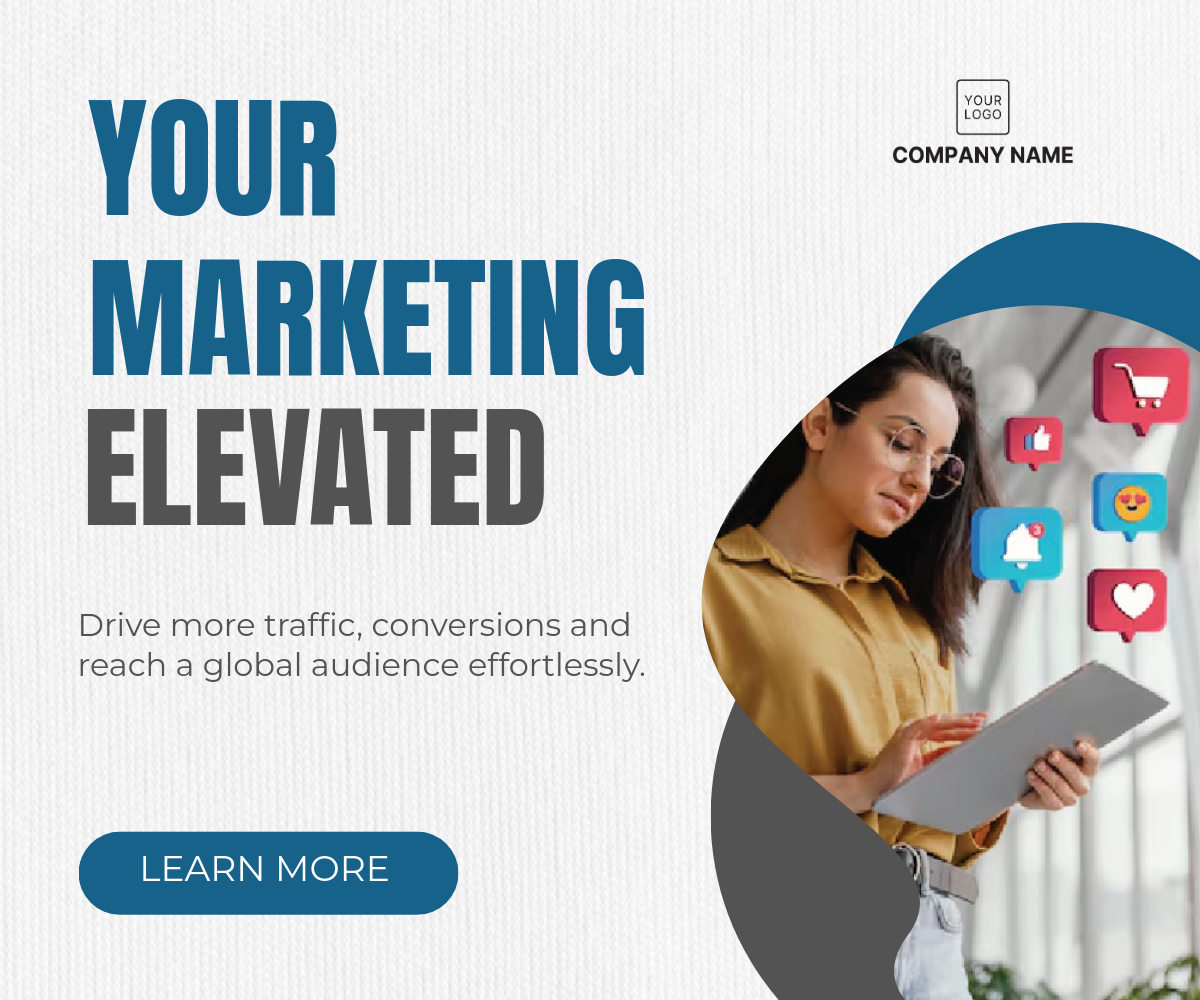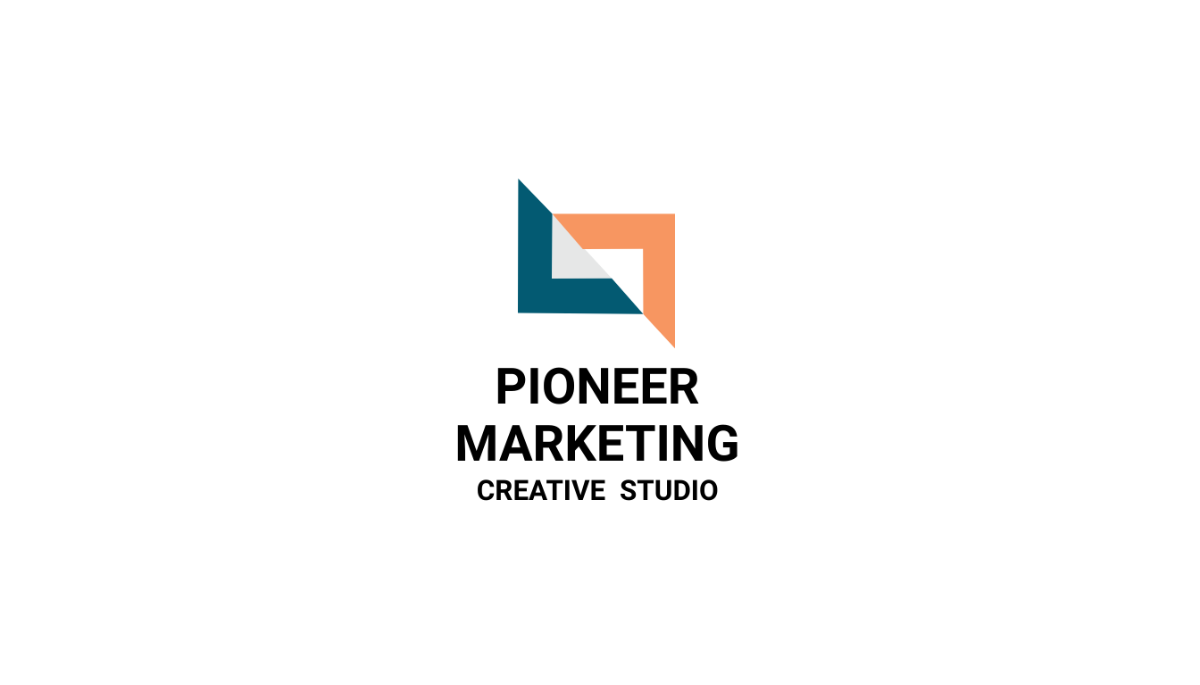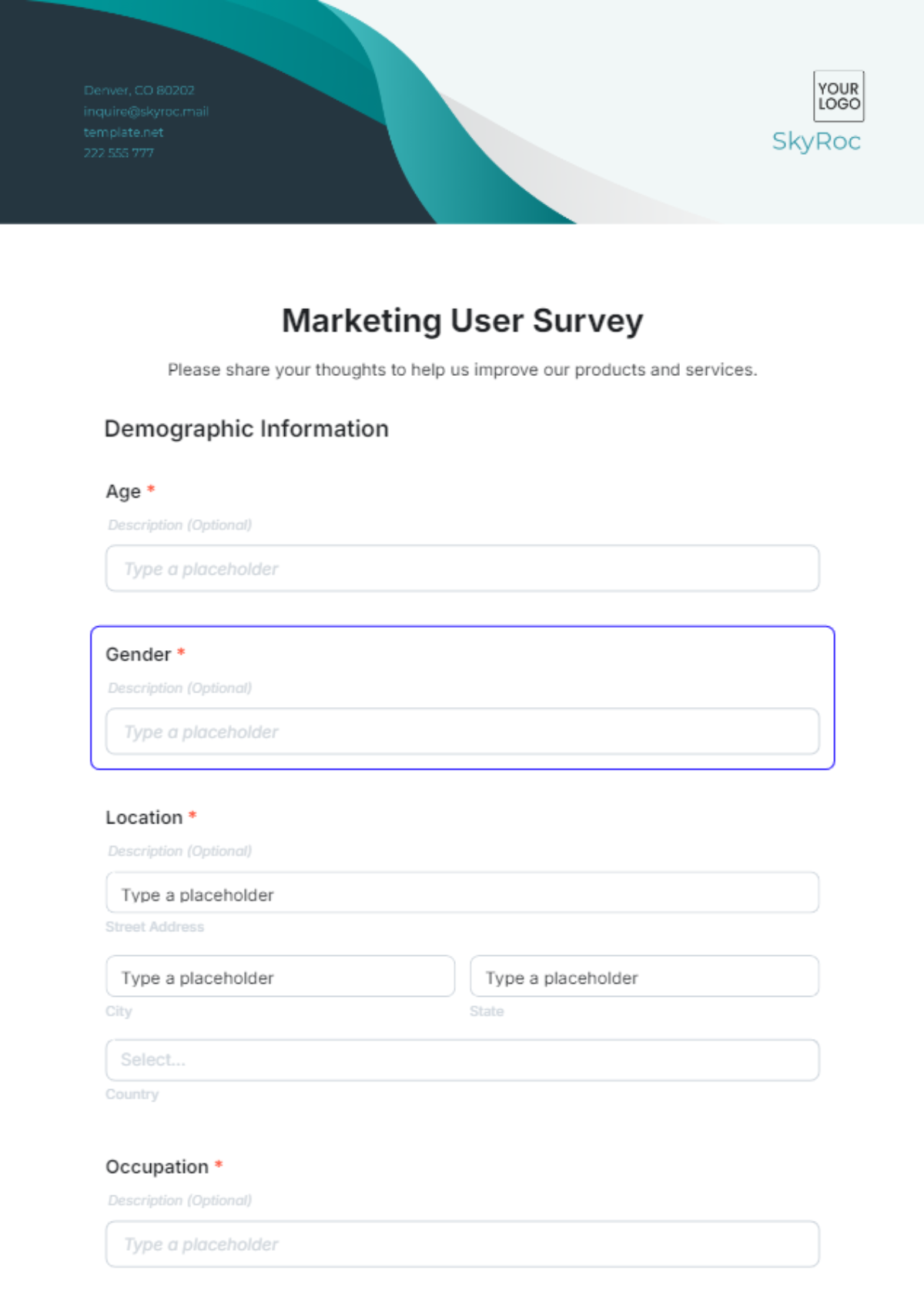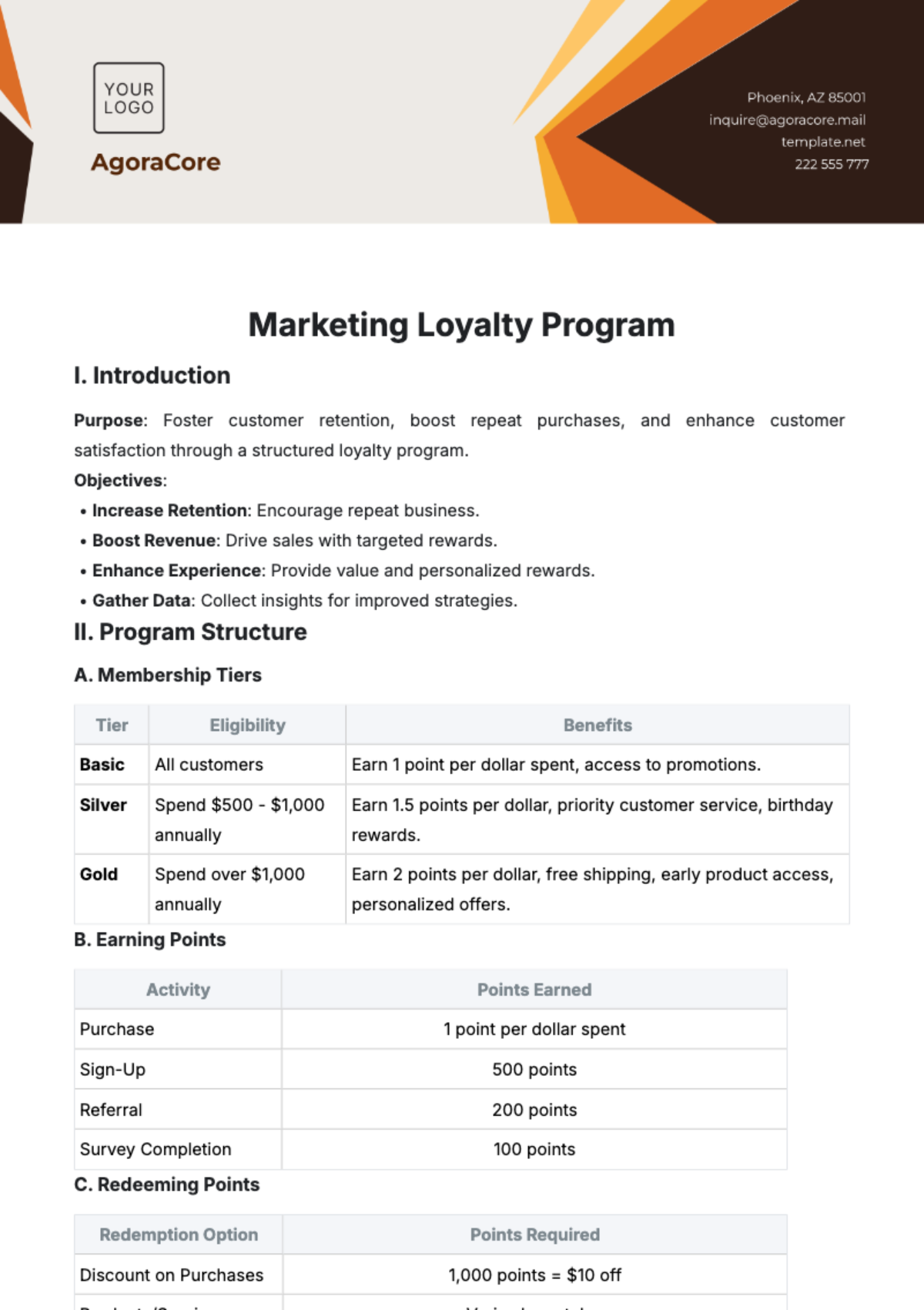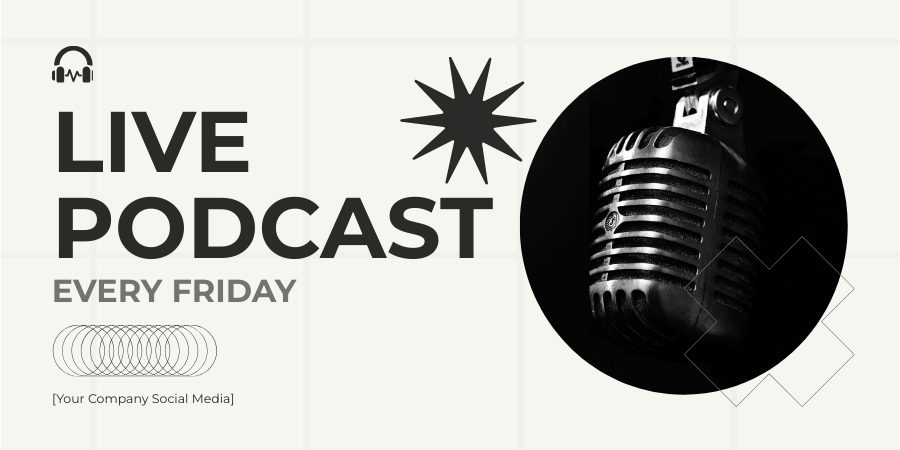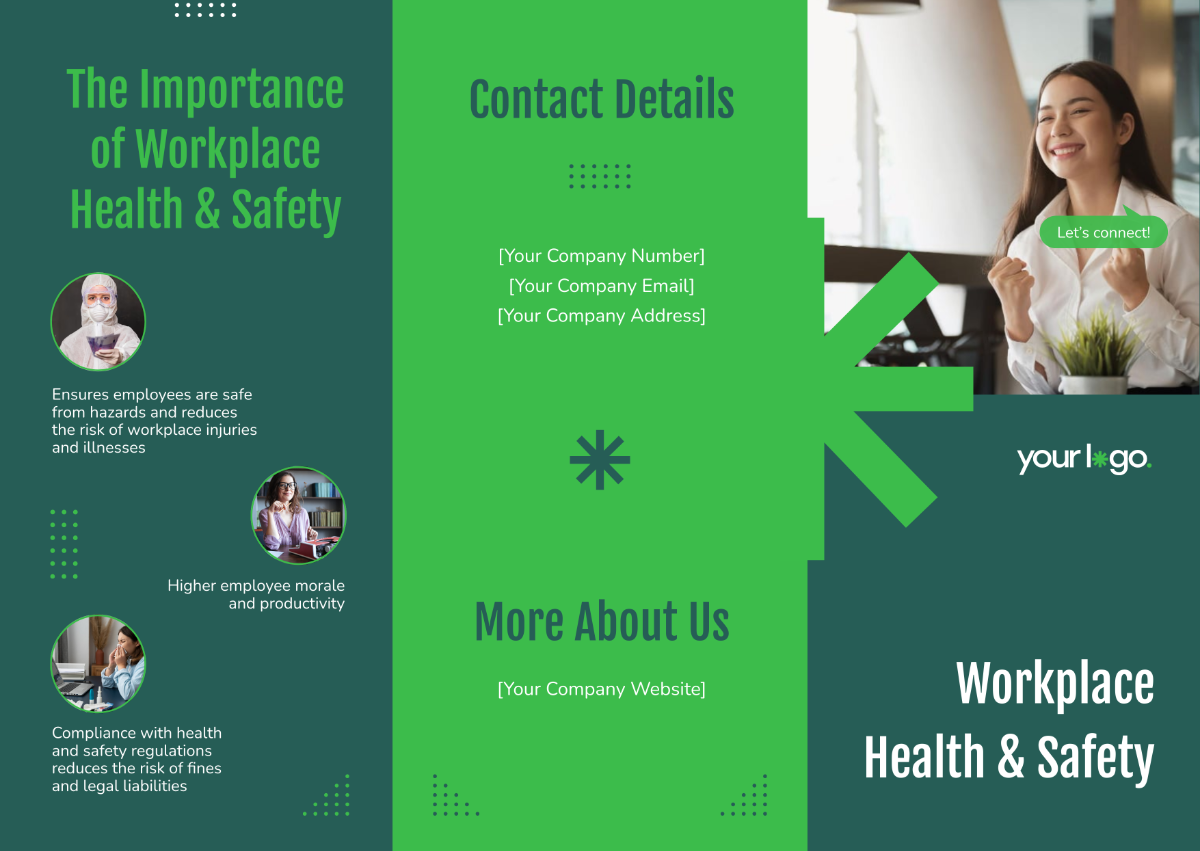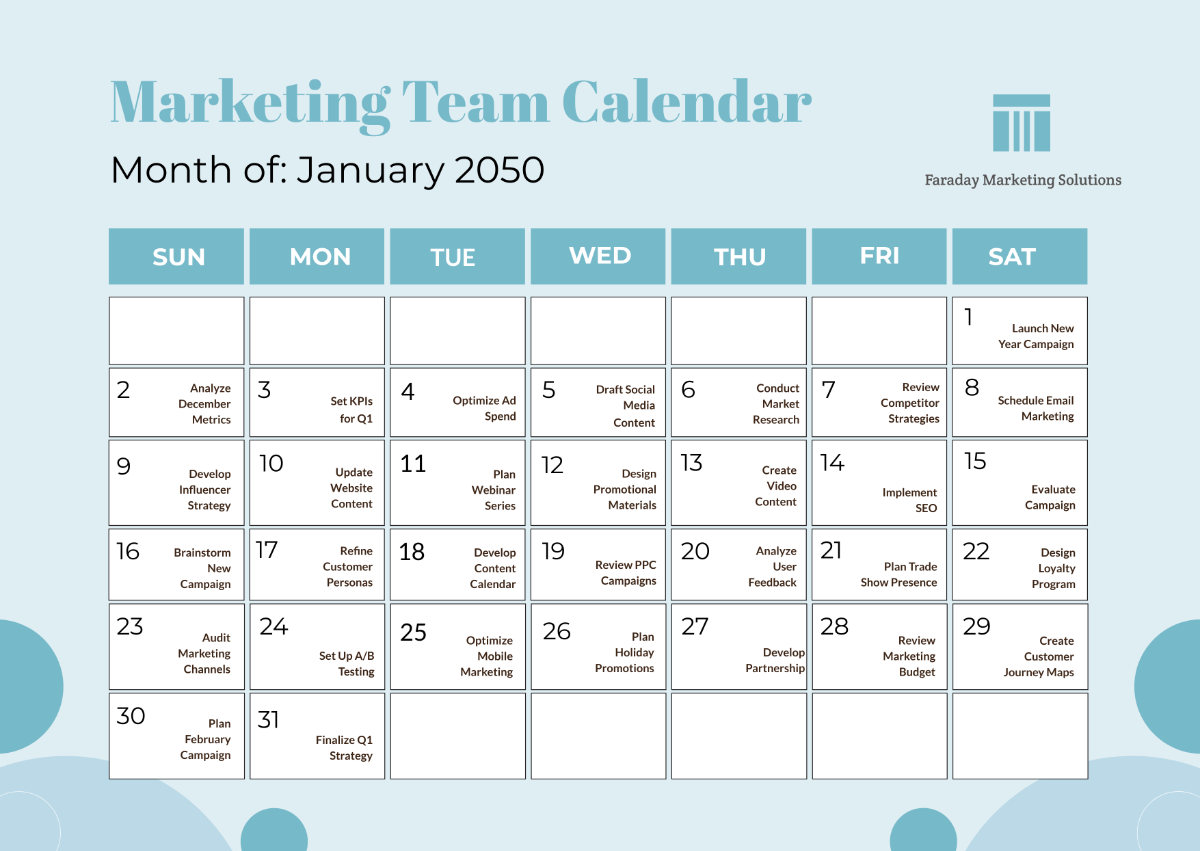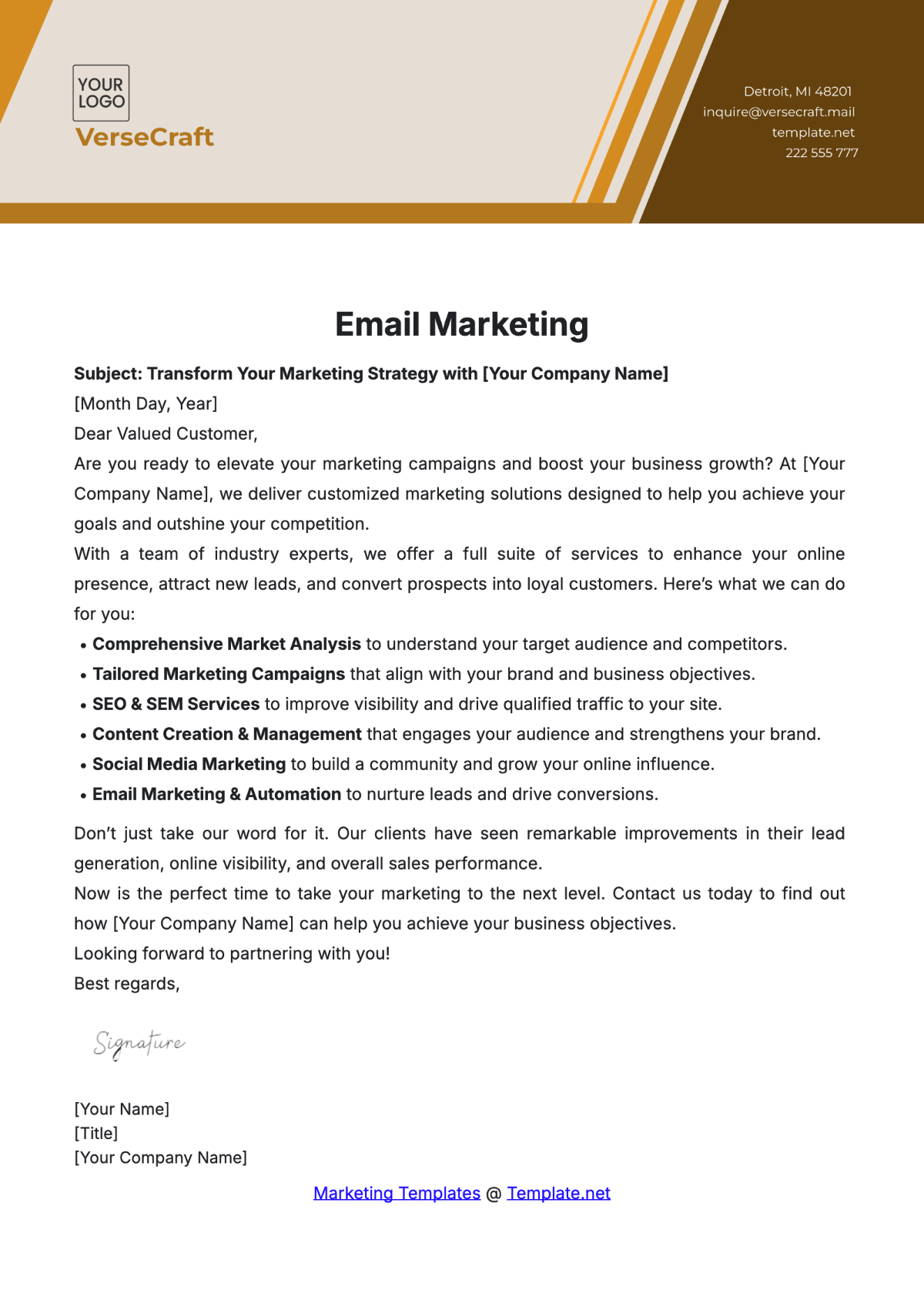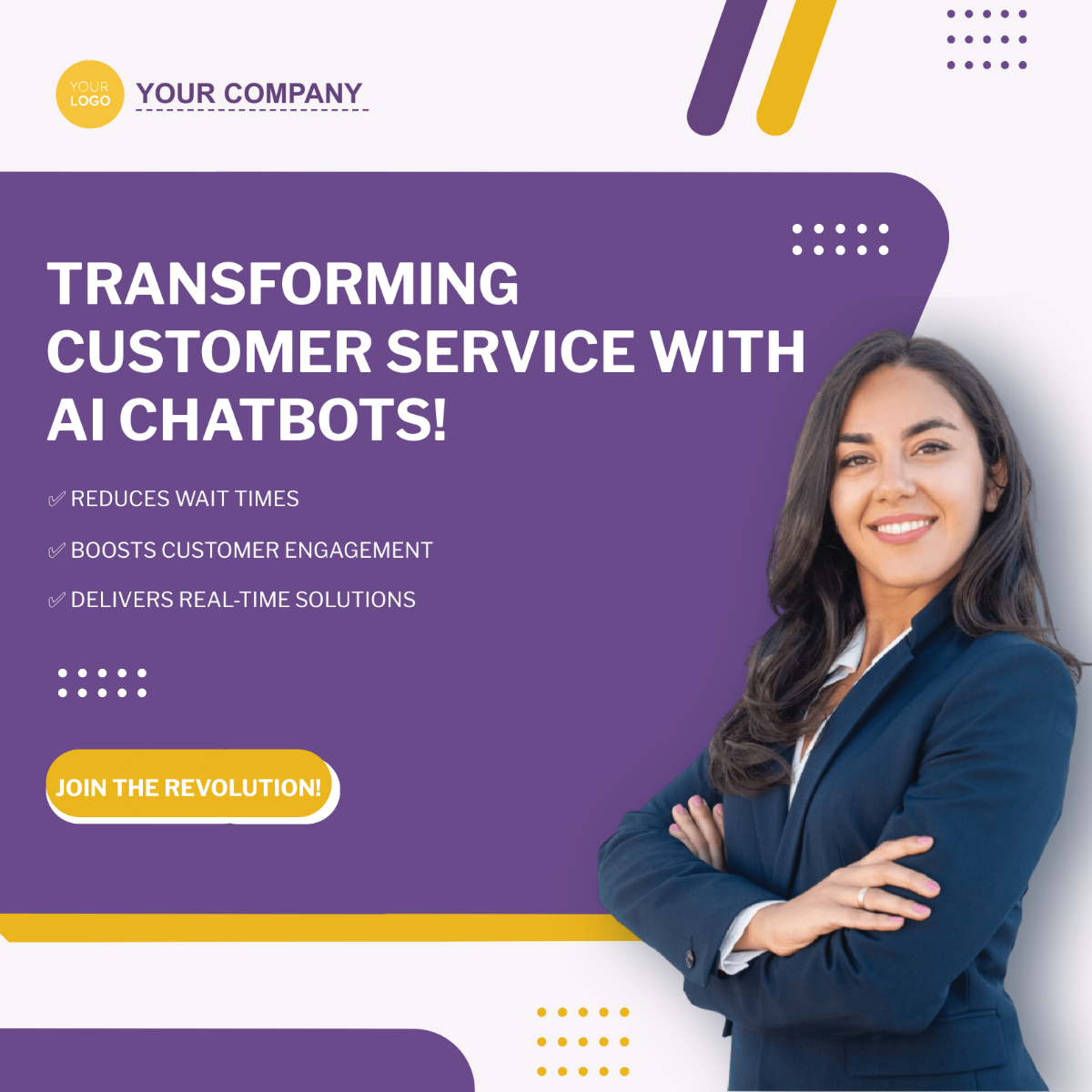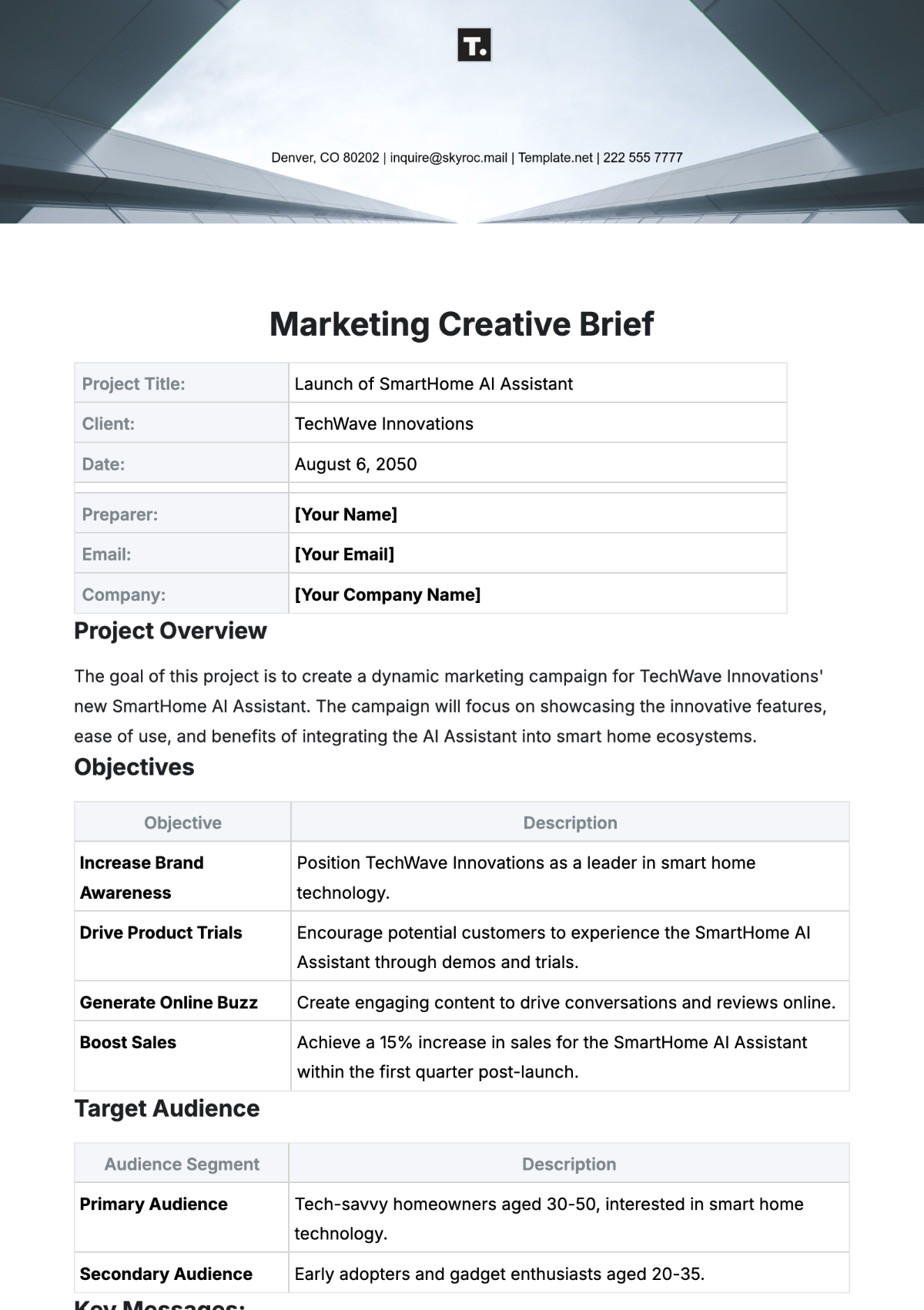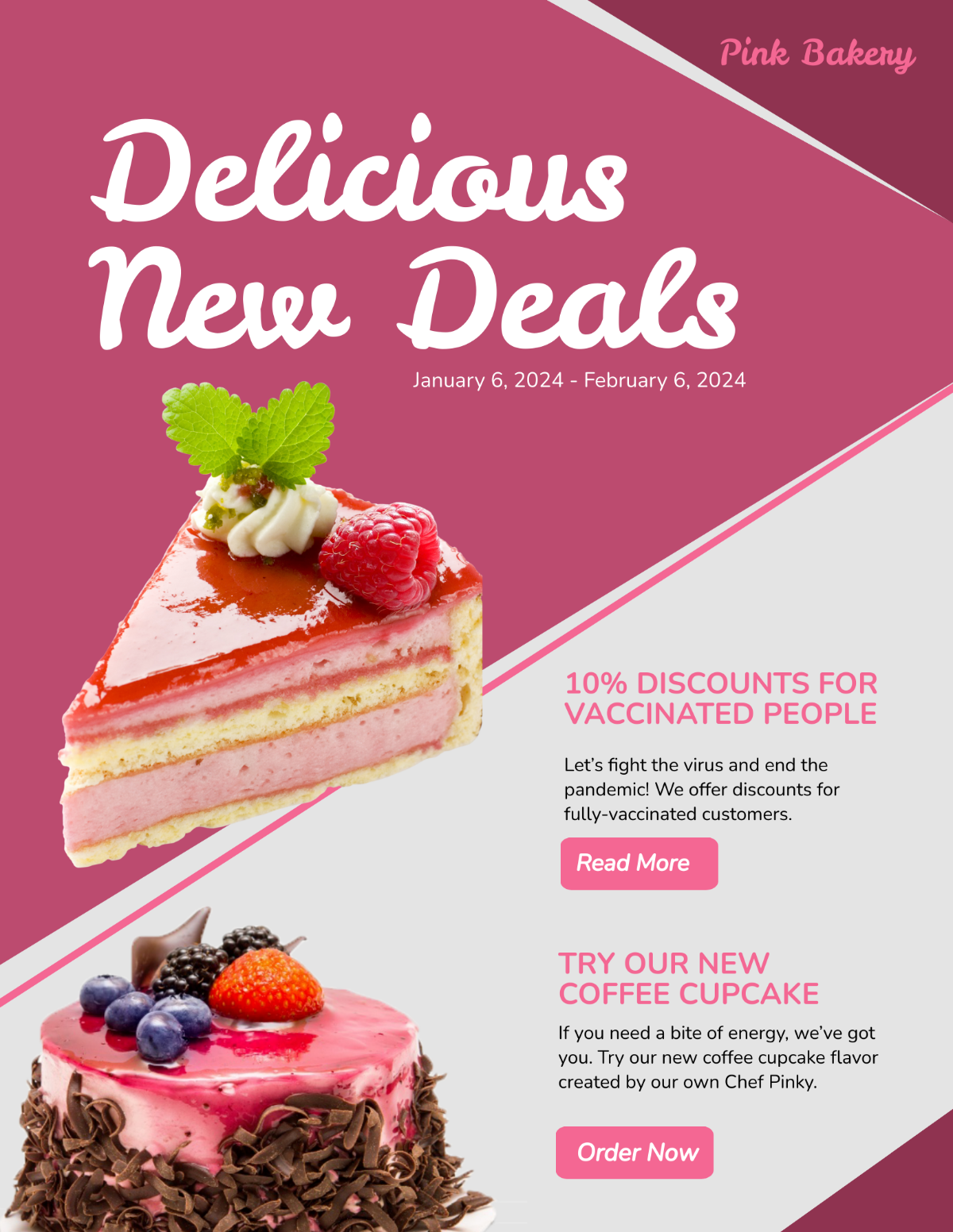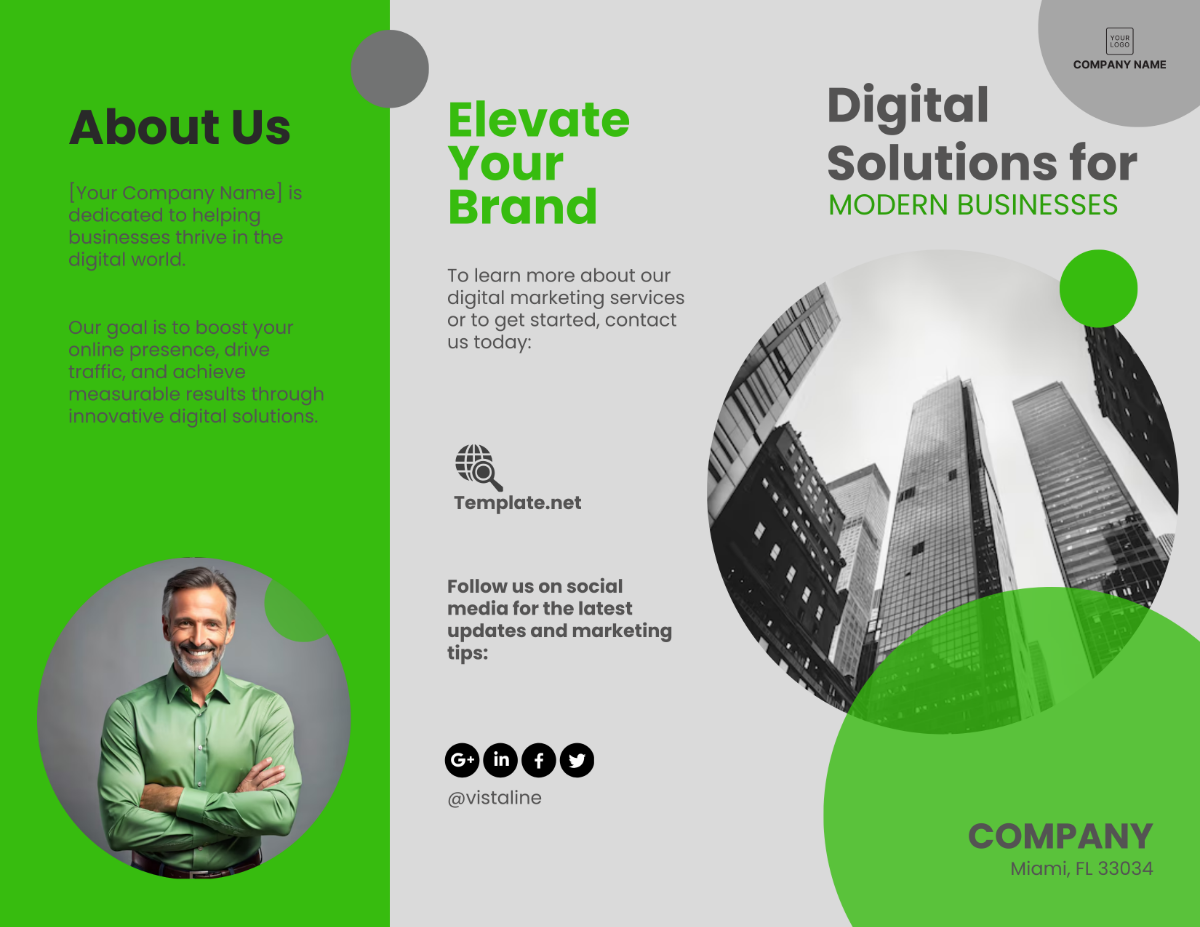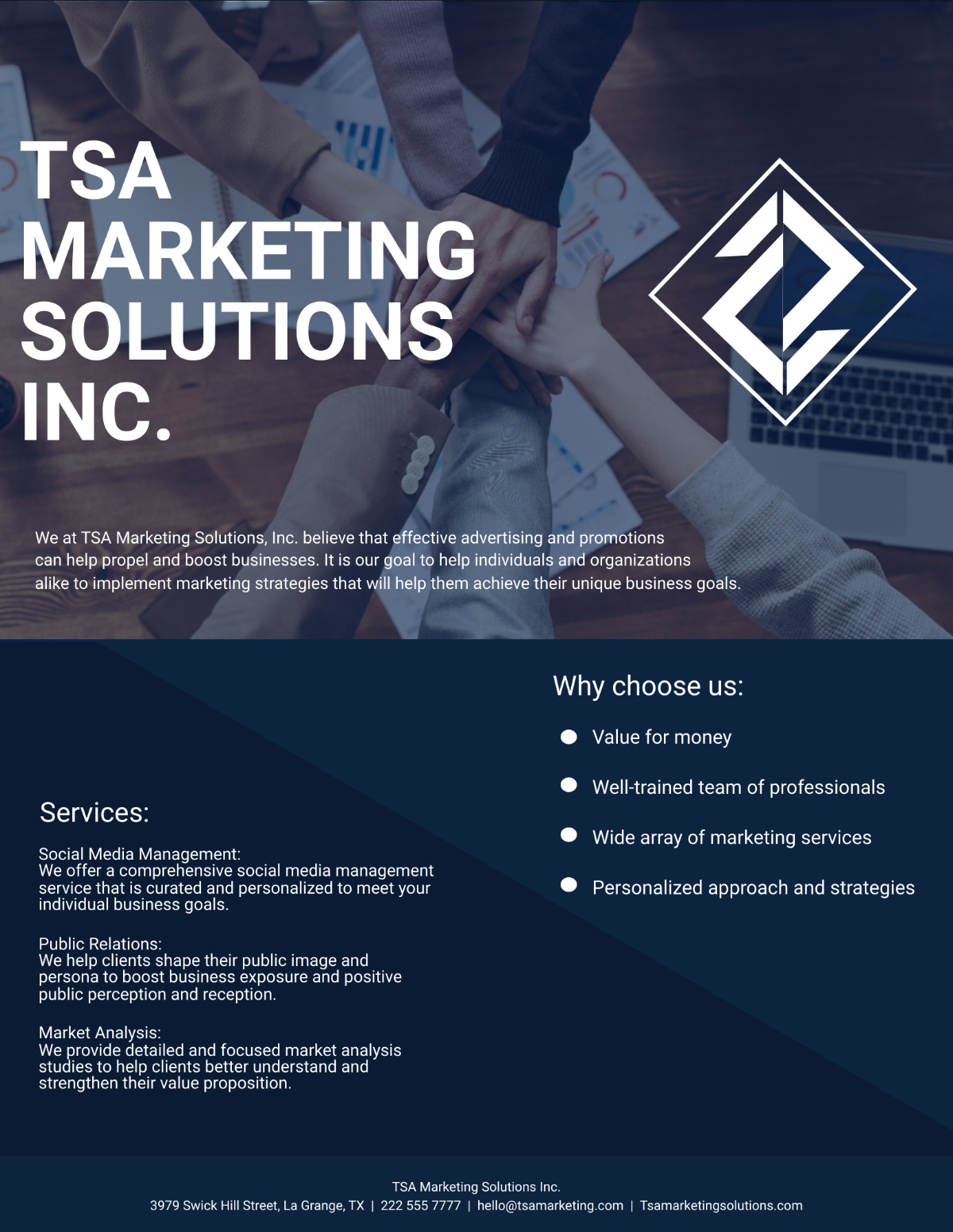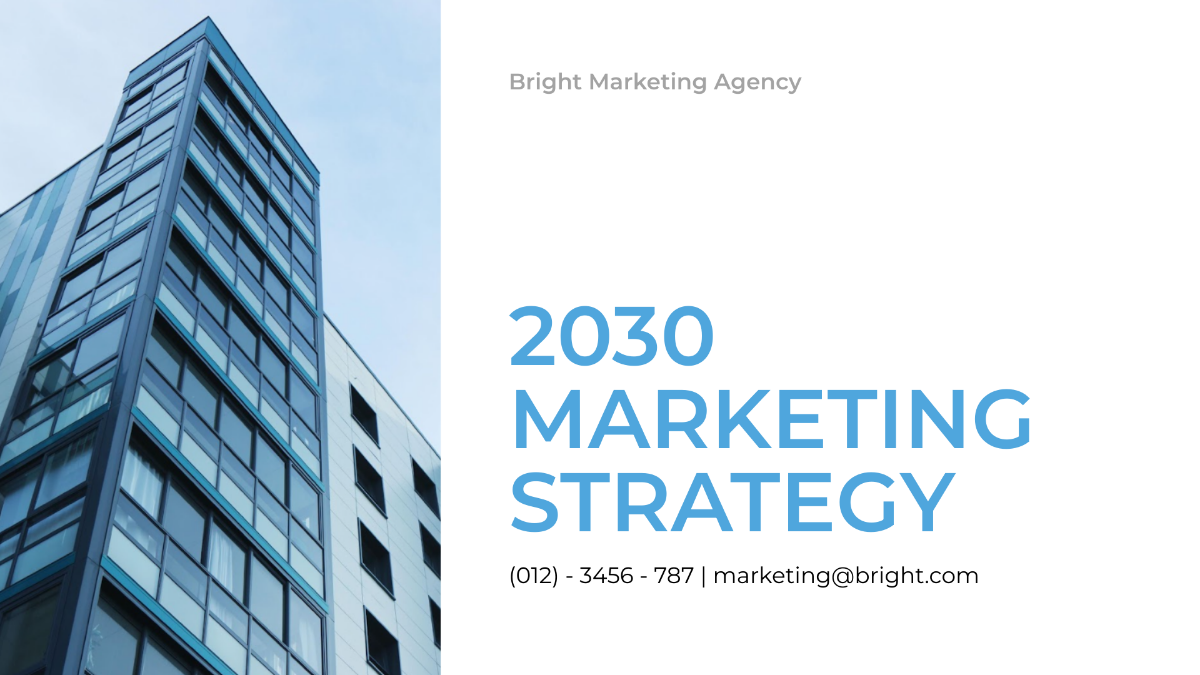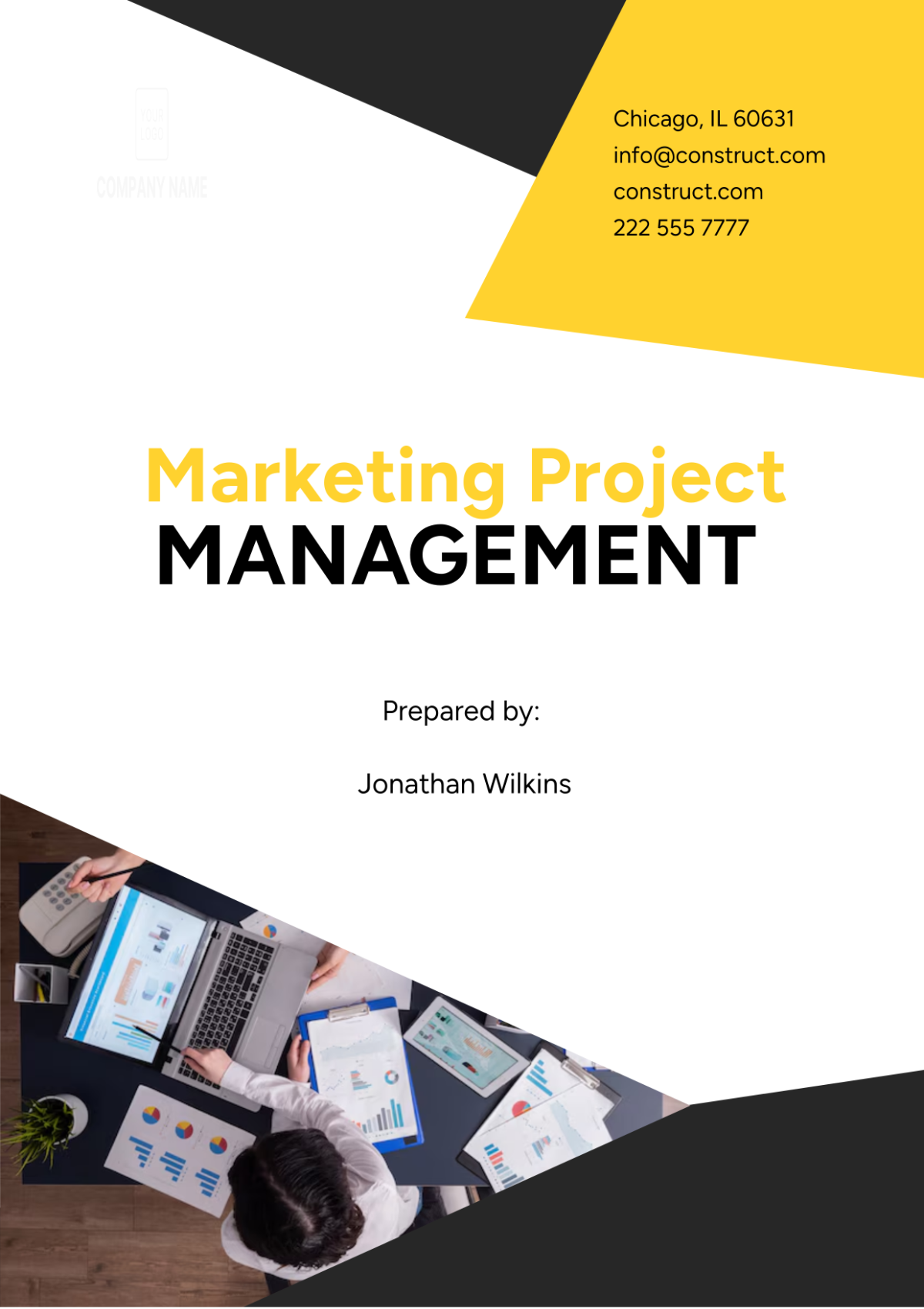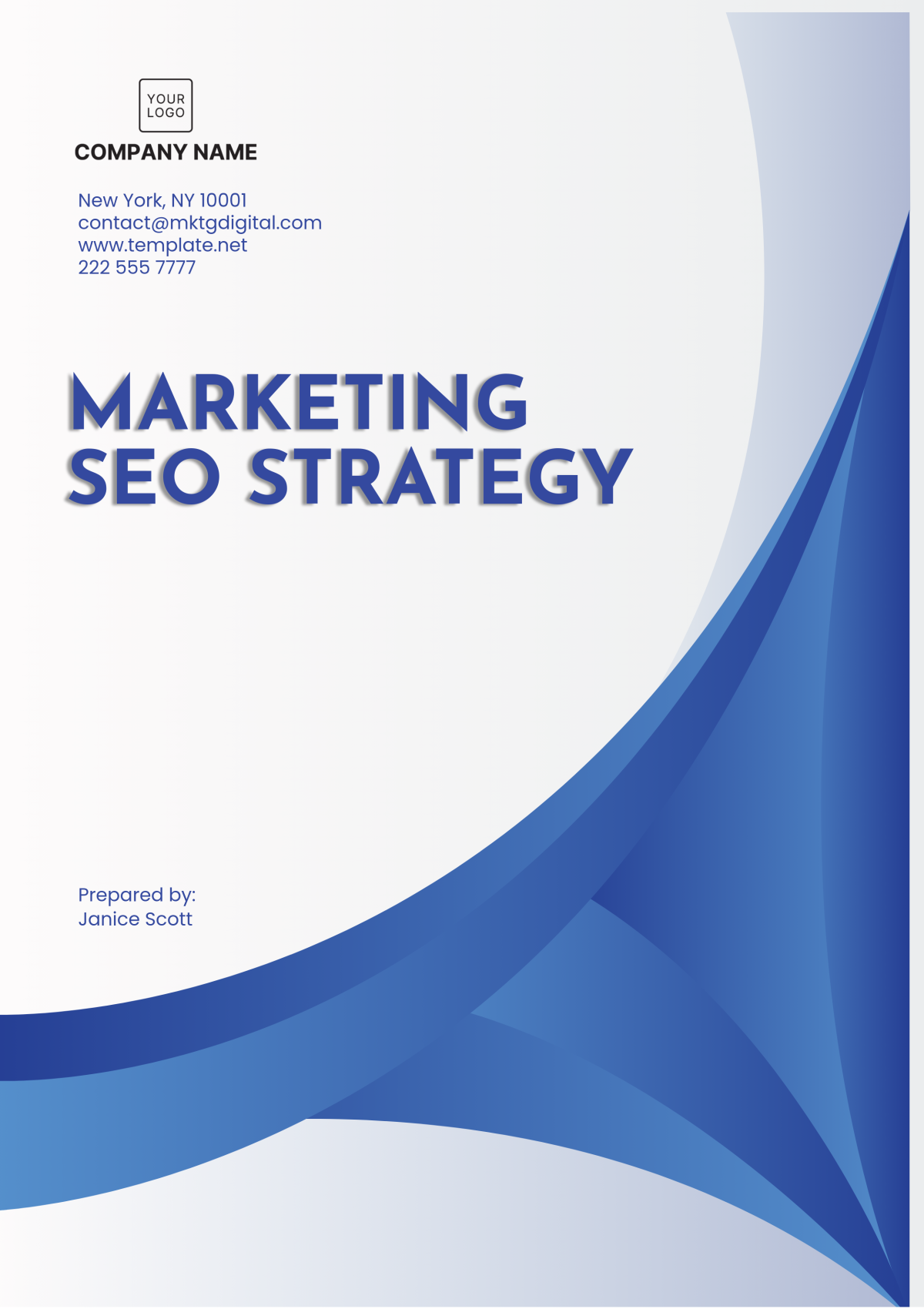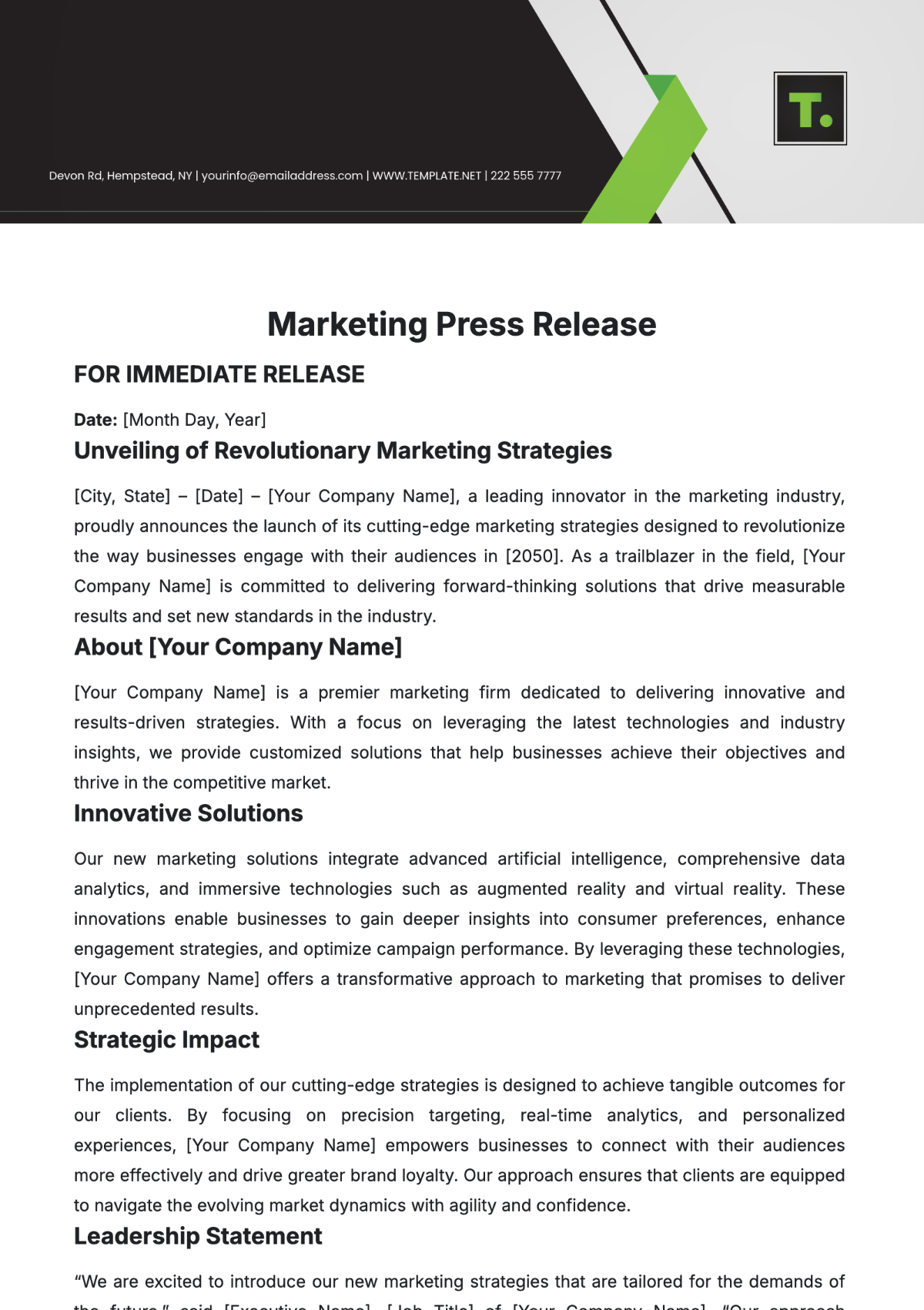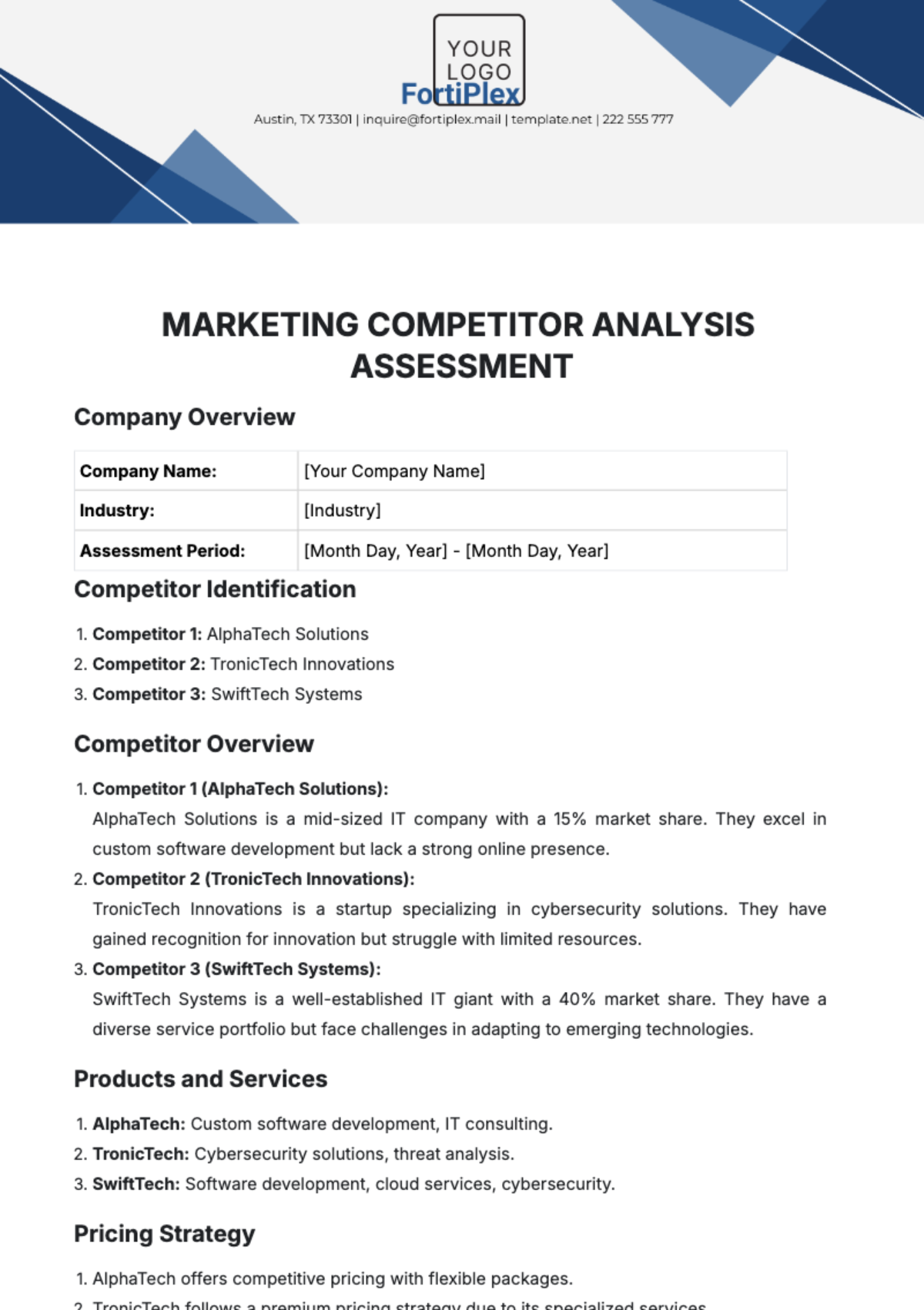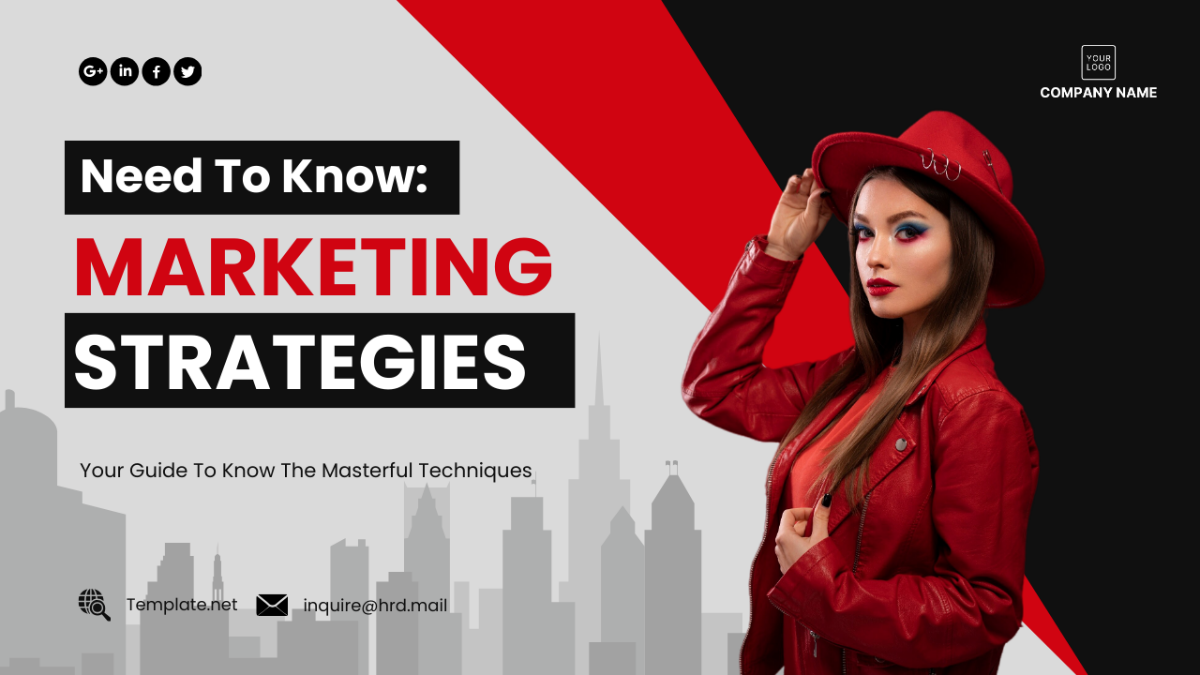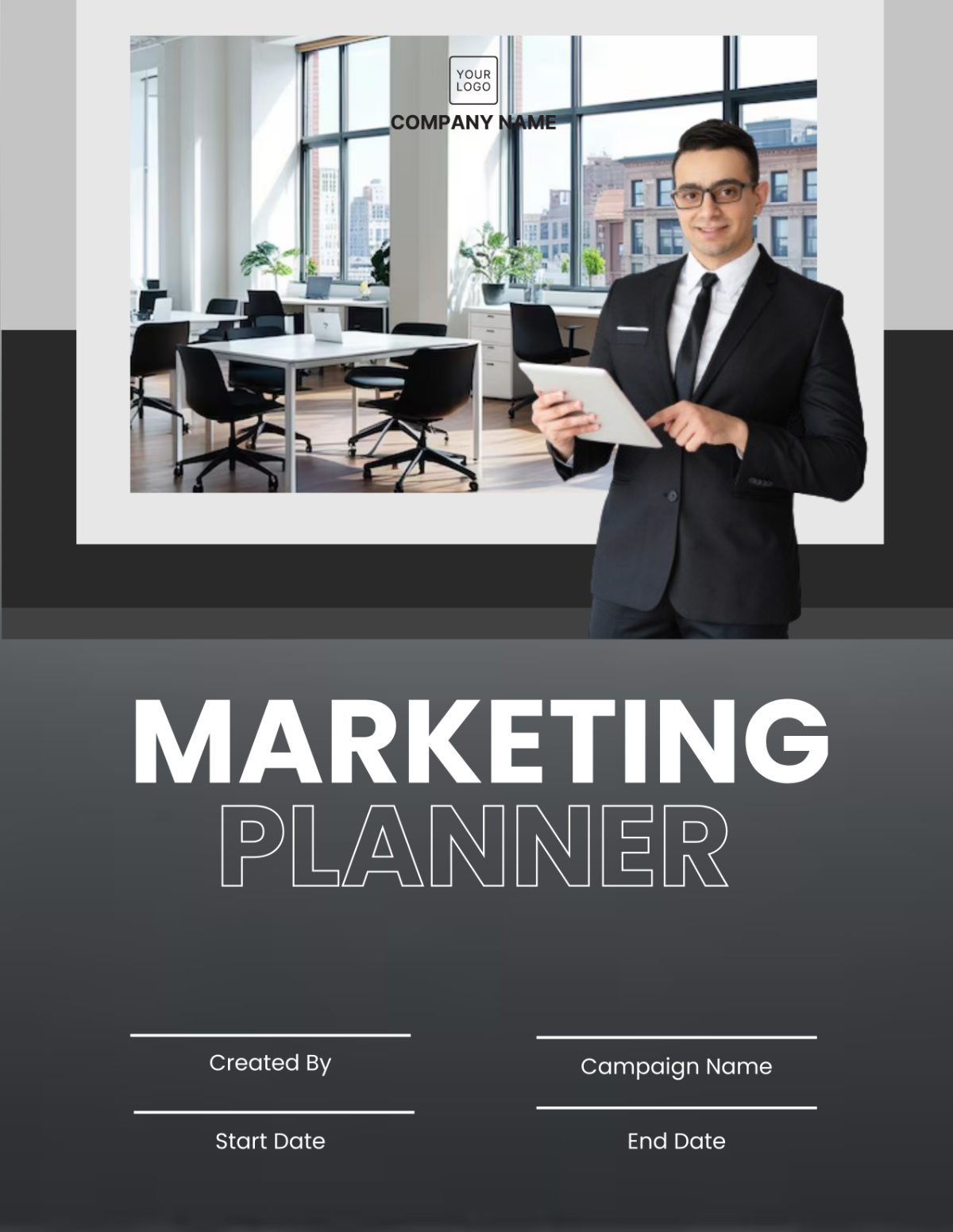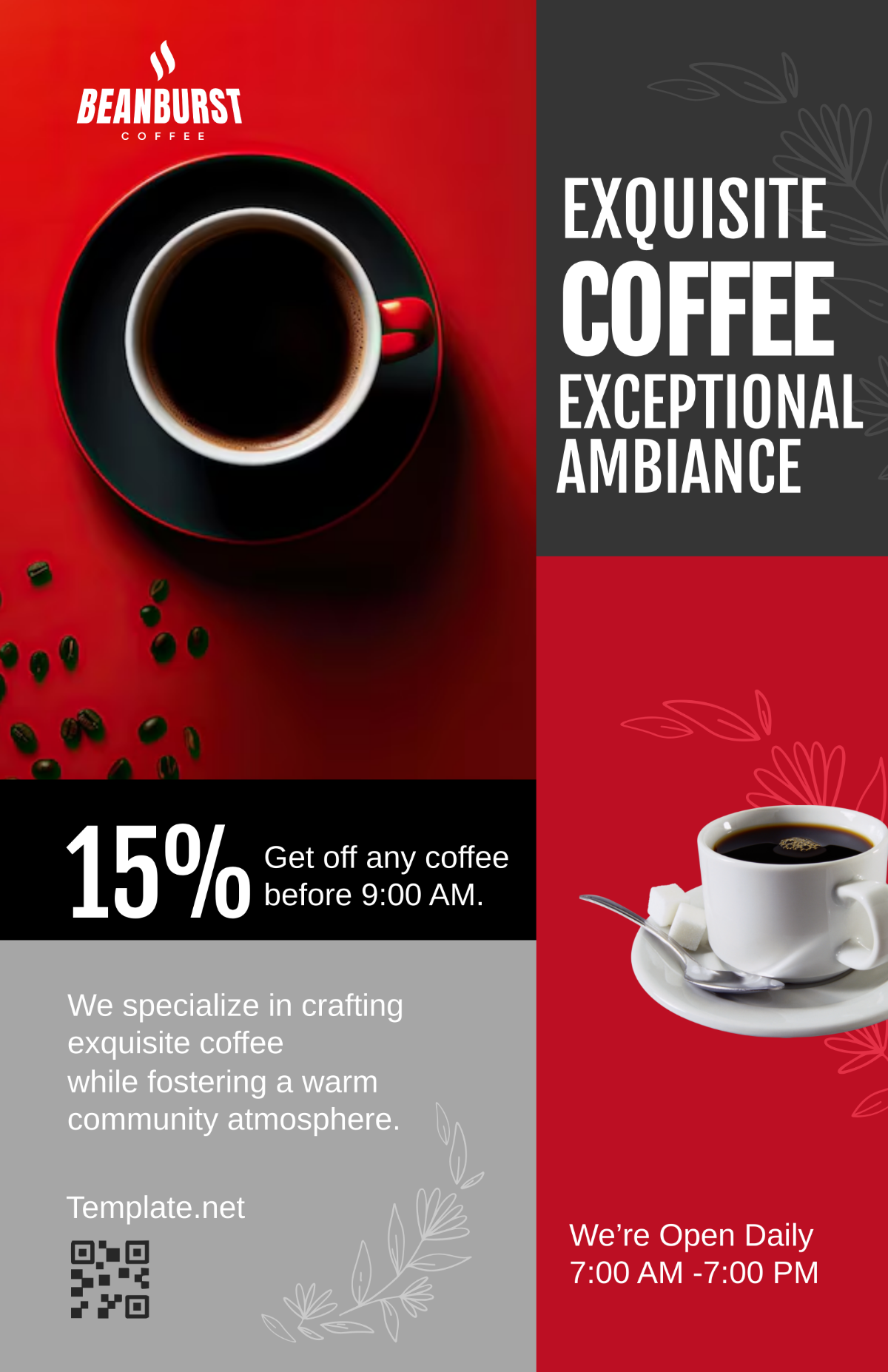Marketing Focus Group Discussion Guide
I. Introduction
A. Purpose of the Focus Group
1. Objective Overview
The primary goal of this focus group is to gather comprehensive qualitative insights into [Your Company Name]'s marketing strategies and consumer perceptions. We aim to understand our target audience’s preferences, attitudes, and behaviors regarding our products and services. By exploring these aspects, we can uncover valuable insights that will help shape our marketing efforts more effectively. This exploration will involve detailed discussions to identify what drives consumer decisions and how our brand is perceived in the market.
Our objective is not only to gather feedback but also to gain a deep understanding of how consumers interact with our brand and what influences their buying decisions. This will provide a nuanced perspective that goes beyond quantitative data, offering a richer, more detailed view of our market positioning and consumer needs.
2. Expected Outcomes
The insights gained from this focus group will be instrumental in refining our marketing campaigns, improving product offerings, and tailoring our communication strategies. We expect to identify key trends, common concerns, and areas for improvement through the in-depth discussions with participants. This feedback will help us better align our marketing strategies with the needs and expectations of our target audience.
By analyzing the information collected, we anticipate developing actionable recommendations that will guide our marketing decisions and strategies. This process will involve synthesizing the feedback into key themes and insights that can be directly applied to enhance our marketing initiatives and product developments.
3. Relevance to Marketing Strategy
The findings from this focus group will have a direct impact on our marketing strategy by highlighting gaps in our current approach and uncovering new opportunities for engagement. Understanding how our target audience perceives our brand and what they value in our products will allow us to tailor our strategies to better meet their needs. This alignment will help us create more effective marketing campaigns and product offerings.
The insights gained will inform our strategic planning, allowing us to prioritize initiatives that resonate with consumers and address any areas of concern. This process will ensure that our marketing efforts are more targeted, relevant, and effective in driving engagement and achieving our business objectives.
B. Focus Group Logistics
1. Date and Time
The focus group is scheduled to take place on [Date] at [Time]. It is important for participants to arrive at least 15 minutes before the scheduled start time to complete any necessary paperwork and to allow for a smooth setup of the discussion environment. This early arrival will help ensure that we can begin the discussion promptly and make the most of the allotted time.
The timing of the focus group has been chosen to accommodate participants’ schedules and to maximize attendance. We aim to select a time that is convenient for most participants, ensuring their availability and full participation in the session.
2. Location
The session will be held at [Venue], located at [Address]. This venue has been selected for its convenient location, accessibility, and facilities that support an effective discussion environment. The space has been arranged to facilitate comfortable seating and an effective dialogue among participants.
The venue is equipped with the necessary audio-visual equipment to record the session and to ensure that all discussions are captured accurately. Additionally, the location provides a neutral setting that helps participants feel at ease and encourages open and honest communication.
3. Duration
The focus group will last approximately [Duration], including time for introductions, the main discussion, and a brief Q&A session. The duration has been planned to ensure a thorough exploration of the topics without overwhelming participants. This timeframe allows for an in-depth discussion while maintaining participants’ engagement and attention throughout the session.
Participants should expect to spend the full allotted time in the session to ensure that all topics are covered comprehensively. We have structured the discussion to include breaks if necessary to maintain comfort and focus.
4. Facilitator
The focus group will be led by [Facilitator’s Name], an experienced moderator with a background in marketing research and consumer behavior. The facilitator will guide the discussion, ensuring that all topics are covered and that each participant has an opportunity to contribute. [Facilitator’s Name] brings a wealth of experience in managing focus groups and extracting valuable insights from participant feedback.
The facilitator’s role includes managing the flow of the discussion, prompting participants to elaborate on their responses, and ensuring that the conversation remains on track. The facilitator will also be responsible for creating an inclusive and respectful environment that encourages participants to share their honest opinions.
5. Participants
The focus group will consist of 15 participants who have been carefully selected to represent our target audience. These individuals were chosen based on specific criteria relevant to [Your Company Name]'s market research goals. Selection criteria may include demographic factors, purchasing behavior, and familiarity with the brand.
Participants have been recruited to ensure a diverse range of perspectives and experiences. This diversity will help us gain a comprehensive understanding of different viewpoints and preferences, providing a more robust set of insights for our marketing strategy.
C. Confidentiality and Consent
1. Confidentiality Assurance
All discussions during the focus group will be confidential. Participants' identities and responses will be anonymized in the final report to ensure privacy. We are committed to protecting the confidentiality of all participants and ensuring that their feedback is used only for the purposes of this research.
The findings will be presented in aggregate form, with no individual comments or identities disclosed. This approach helps maintain participant anonymity and fosters an environment where individuals feel comfortable sharing their honest opinions without concern for personal disclosure.
2. Consent Form
Each participant will be required to sign a consent form acknowledging their understanding of the focus group’s purpose and their agreement to participate. The consent form will outline participants' rights, including their right to withdraw from the study at any time without penalty.
The form will also detail the measures in place to protect participants' privacy and the use of their feedback. This documentation ensures that participants are fully informed about the focus group and their involvement in the research process.
3. Use of Data
The data collected during the focus group will be used solely for [Your Company Name]'s internal marketing research purposes. Participants' feedback will be analyzed to refine our marketing strategies, improve product offerings, and enhance customer engagement. The data will be handled with strict confidentiality and used to make informed decisions based on participants' insights.
We will ensure that all findings are reported in a manner that maintains the anonymity of participants and focuses on the collective insights gathered from the group. This approach allows us to utilize the feedback effectively while upholding ethical standards in research.
II. Discussion Topics
A. Introduction and Warm-Up
1. Icebreaker Activity
To initiate the discussion and make participants feel comfortable, we will start with an icebreaker activity. This may include a brief personal introduction where each participant shares their name, occupation, and a fun fact about themselves. The icebreaker is designed to create a relaxed atmosphere and encourage open communication among participants.
The activity will help participants get to know each other and build rapport before diving into the main discussion topics. This step is crucial for setting a positive tone and ensuring that everyone feels at ease contributing to the conversation.
2. Overview of Discussion Agenda
We will provide a brief overview of the discussion agenda to ensure that participants understand the structure of the session and what is expected of them. The agenda will outline the main topics to be covered, including brand perception, product evaluation, and marketing strategies.
This overview will help participants prepare for the discussion and focus their responses on the relevant areas. By clearly communicating the agenda, we aim to facilitate a structured and productive discussion that addresses all key aspects of our research objectives.
B. Brand Perception
1. Brand Awareness
We will explore participants' general awareness of [Your Company Name] and its products. Questions will include: “What comes to mind when you hear the name [Your Company Name]?” and “How did you first learn about our brand?” These questions aim to gauge the level of brand recognition and the sources through which participants became aware of our company.
Understanding brand awareness helps us assess the effectiveness of our branding efforts and identify areas where additional exposure may be needed. Participants' responses will provide insights into how well our brand is known and the impact of our marketing activities on consumer awareness.
2. Brand Image and Reputation
Next, we will investigate how participants perceive the brand's image and reputation. We will use questions like: “How would you describe [Your Company Name]'s reputation in the market?” and “What adjectives would you use to describe our brand?” This discussion will help us understand the overall perception of our brand and identify any positive or negative associations.
Participants' feedback on brand image will provide valuable insights into how our brand is viewed relative to competitors. It will also highlight areas where we may need to address reputation concerns or reinforce positive attributes.
3. Competitor Comparison
We will examine how [Your Company Name] compares to competitors in the market. Questions will include: “How does [Your Company Name] compare to other similar brands you are familiar with?” and “What makes our brand stand out or fall short in comparison?” This comparison will help us understand our competitive position and identify strengths and weaknesses relative to other brands.
Analyzing competitors' perceptions allows us to pinpoint opportunities for differentiation and areas where we can enhance our market presence. Participants' feedback will inform strategies to improve our competitive advantage and address any perceived shortcomings.
C. Product and Service Evaluation
1. Product Features
We will discuss the perceived value and effectiveness of the product features offered by [Your Company Name]. Questions to ask include: “What features of our product do you find most valuable?” and “Are there any features you feel are missing or could be improved?” This discussion will help us assess how well our products meet customer needs and identify opportunities for enhancement.
Participants' input on product features will provide insights into which aspects of our offerings are most important to them and where we can make improvements. This feedback will be used to refine product development and ensure that our products align with customer expectations.
2. Service Experience
We will evaluate participants' experiences with [Your Company Name]'s services. Questions will include: “How would you rate your overall experience with our customer service?” and “Have you encountered any issues, and how were they resolved?” This discussion will help us understand the quality of our service and identify areas for improvement.
Participants' feedback on service experience will provide insights into customer satisfaction and highlight any common issues or concerns. This information will be used to enhance our customer service and address any areas where we may be falling short.
3. Pricing Perception
We will assess how participants perceive the pricing of [Your Company Name]'s products and services. Questions will include: “Do you think our prices are fair compared to competitors?” and “How does our pricing impact your purchasing decisions?” This discussion will help us understand how pricing affects customer behavior and whether our pricing strategy is competitive.
Participants' input on pricing will provide valuable information on how price points influence their purchasing decisions and whether adjustments may be necessary. This feedback will be used to evaluate and potentially revise our pricing strategy.
D. Marketing Strategies
1. Advertising Effectiveness
We will analyze the effectiveness of our current advertising campaigns. Questions to ask include: “Which of our advertisements have you seen recently?” and “How effective do you find our ads in conveying the brand message?” This discussion will help us evaluate the impact of our advertising efforts and determine how well our messages are resonating with consumers.
Participants' feedback on advertising will provide insights into the strengths and weaknesses of our current campaigns. This information will be used to refine our advertising strategies and ensure that our messages are effectively reaching and engaging our target audience.
2. Promotional Activities
We will discuss the impact of promotional activities and offers on participants' purchasing decisions. Questions will include: “What kind of promotions or discounts would encourage you to buy more from [Your Company Name]?” and “Have you participated in any of our recent promotions? If so, how was your experience?” This discussion will help us understand how promotions influence customer behavior and identify effective strategies for future promotions.
Participants' input on promotional activities will provide insights into what types of offers are most appealing and how they impact purchasing decisions. This feedback will be used to develop more effective promotional strategies and enhance customer engagement.
3. Digital Presence
We will evaluate [Your Company Name]'s online presence and digital marketing efforts. Questions to ask include: “How often do you visit our website or social media pages?” and “How engaging do you find our online content and interactions?” This discussion will help us assess the effectiveness of our digital marketing and identify opportunities for improvement.
Participants' feedback on digital presence will provide insights into how well our online content and interactions are resonating with consumers. This information will be used to enhance our digital marketing strategies and improve our online engagement.
E. Customer Needs and Preferences
1. Buying Motivations
We will seek to understand what drives participants to make purchasing decisions. Questions will include: “What factors are most important to you when choosing a product from [Your Company Name]?” and “How do you prioritize these factors?” This discussion will help us identify the key motivations behind consumer purchases and tailor our offerings to better meet their needs.
Participants' input on buying motivations will provide valuable information on what influences their purchasing decisions and how we can align our marketing strategies with their preferences. This feedback will be used to enhance our product offerings and marketing approaches.
2. Expectations and Preferences
We will explore participants' expectations and preferences regarding our products and services. Questions will include: “What are your expectations when purchasing from our brand?” and “What would make you more likely to choose our products over others?” This discussion will help us understand what customers expect from our brand and identify ways to exceed those expectations.
Participants' feedback on expectations and preferences will provide insights into how we can enhance our products and services to better meet customer needs. This information will be used to refine our offerings and ensure that we are delivering value that aligns with customer expectations.
3. Feedback and Suggestions
We will encourage participants to provide constructive feedback and suggestions for improvement. Questions will include: “What changes or improvements would you like to see in our products or services?” and “Are there any new features or services you think we should offer?” This discussion will help us gather actionable insights for enhancing our products and services.
Participants' suggestions will provide valuable input on how we can improve our offerings and address any areas of concern. This feedback will be used to drive continuous improvement and ensure that we are meeting the evolving needs of our customers.
III. Emerging Trends and Innovations
A. Industry Trends
1. Current Trends
We will explore the current trends within the industry to understand their impact on customer behavior and [Your Company Name]'s market position. Questions will include: “What are the key trends you see shaping our industry right now?” and “How do these trends influence your choices as a consumer?” This discussion will help us gauge which trends are most relevant and impactful to our target audience.
Understanding current industry trends will allow us to identify shifts in consumer preferences, technological advancements, and market dynamics. This information will be crucial in adapting our strategies to align with the evolving landscape, ensuring that [Your Company Name] remains competitive and relevant.
Participants' feedback on industry trends will offer insights into which trends they consider most significant and how they affect their purchasing decisions. This can guide our strategy to incorporate or respond to these trends in ways that resonate with our audience, enhancing our market positioning.
2. Future Predictions
We will seek participants' predictions about future industry trends to better anticipate changes and prepare for them. Questions will include: “What emerging trends do you foresee having a major impact on the industry in the next five years?” and “How do you expect these future trends to alter your buying behavior or expectations from companies like [Your Company Name]?” This discussion will help us forecast potential changes and adapt our long-term strategy accordingly.
Participants' predictions will provide a forward-looking perspective, helping us anticipate future market conditions and consumer needs. By understanding these potential changes, [Your Company Name] can proactively develop strategies to stay ahead of the curve and seize emerging opportunities.
Their insights will also help us identify potential areas for innovation and growth, ensuring that we are well-prepared to meet future demands and capitalize on new trends as they emerge.
B. Technological Innovations
1. Impact of Technology
We will discuss how recent technological innovations are impacting customer expectations and experiences within the industry. Questions will include: “How have advancements in technology changed the way you interact with products and services?” and “What technological innovations do you find most beneficial or disruptive?” This discussion will help us understand the role of technology in shaping customer experiences and expectations.
Participants' feedback on the impact of technology will provide insights into how new tools and solutions are affecting their interactions with products and services. This information will be used to evaluate how [Your Company Name] can leverage technology to enhance its offerings and better meet customer needs.
Their perspectives will help us identify technological advancements that could be integrated into our products or services to improve functionality, convenience, and overall customer satisfaction.
2. Adoption of New Technologies
We will assess participants' willingness to adopt and integrate new technologies into their lives. Questions will include: “How receptive are you to new technological innovations introduced by companies?” and “Can you share recent experiences where you adopted a new technology and how it impacted your experience with a product or service?” This discussion will help us gauge the openness of our target audience to technological changes and their experiences with emerging tech.
Participants' willingness to adopt new technologies will provide valuable information on how to introduce and position new technological features or solutions. This feedback will guide our approach to innovation and help ensure that new technologies align with customer preferences and needs.
Their experiences with recent technological innovations will also help us understand potential barriers to adoption and identify strategies to facilitate smoother integration and acceptance of new technologies.
IV. Competitive Landscape
A. Competitor Analysis
1. Competitor Perceptions
We will investigate participants' perceptions of [Your Company Name]'s competitors to gain a deeper understanding of our competitive environment. Questions will include: “Which competitors do you consider when making a purchasing decision, and why?” and “What are your thoughts on how [Your Company Name] compares to these competitors in terms of quality, value, and service?” This discussion will help us understand how competitors are perceived and where [Your Company Name] stands in the market.
Participants' perceptions of competitors will provide insights into how [Your Company Name] is viewed relative to its rivals. This information will help us identify areas where we excel and areas where there is room for improvement, enabling us to enhance our competitive strategies and address any gaps in our offerings.
Their feedback will also help us understand the strengths and weaknesses of our competitors from the perspective of our target audience, informing our approach to differentiation and competitive positioning.
2. Competitive Advantages and Disadvantages
We will explore participants' views on the competitive advantages and disadvantages of [Your Company Name] compared to its competitors. Questions will include: “What do you perceive as the key strengths of [Your Company Name] over its competitors?” and “Are there specific areas where you believe our competitors have an edge?” This discussion will help us identify our key differentiators and areas where we may need to improve.
Participants' feedback on competitive advantages and disadvantages will provide valuable insights into how [Your Company Name] is perceived in terms of its unique selling points and potential areas of vulnerability. This information will be used to strengthen our market position by leveraging our strengths and addressing any weaknesses relative to competitors.
Their perspectives will also help us refine our competitive strategies and develop targeted initiatives to enhance our competitive advantage in the market.
B. Market Positioning
1. Brand Positioning
We will assess participants' understanding and perception of [Your Company Name]'s brand positioning. Questions will include: “How do you perceive the positioning of [Your Company Name] in the market compared to other brands?” and “Does our brand positioning align with your expectations and needs?” This discussion will help us evaluate how effectively our brand positioning communicates our value proposition and resonates with our target audience.
Participants' feedback on brand positioning will provide insights into how well our brand is positioned in the market and whether it effectively reflects our intended image and value. This information will be used to refine our brand messaging and positioning strategies to better align with customer expectations.
Their perceptions will also help us identify any discrepancies between our intended brand positioning and how it is actually perceived, allowing us to make adjustments as needed to improve brand alignment and relevance.
2. Perceived Market Gaps
We will identify any perceived market gaps that [Your Company Name] could address to better meet customer needs. Questions will include: “Are there any specific needs or gaps in the market that you feel [Your Company Name] is not currently addressing?” and “What opportunities do you see for [Your Company Name] to innovate or expand its offerings?” This discussion will help us uncover potential areas for growth and innovation.
Participants' feedback on perceived market gaps will provide valuable insights into unmet needs and opportunities within the market. This information will be used to develop new products or services, explore new market segments, and address any gaps in our current offerings.
Their suggestions for innovation and expansion will also help us stay ahead of competitors and ensure that we are continually evolving to meet the changing needs of our customers.
V. Conclusion
A. Summary of Key Findings
1. Recap of Main Insights
At the conclusion of the focus group, we will summarize the key points discussed and highlight the major themes and insights gathered from participants’ feedback. This summary will include an overview of the main findings related to brand perception, product evaluation, and marketing strategies.
By summarizing the key findings, we aim to provide a clear and concise overview of the insights gained during the focus group. This summary will serve as a foundation for developing actionable recommendations and informing our marketing strategy.
2. Implications for Marketing Strategy
We will discuss how the insights gathered from the focus group will impact [Your Company Name]'s marketing strategy. This includes explaining how the findings will be used to refine marketing tactics, improve product offerings, and enhance customer engagement.
The implications of the findings will be translated into actionable recommendations that will guide our strategic planning. We will prioritize initiatives that align with the insights gained and address any areas for improvement identified during the discussion.
B. Next Steps
1. Action Plan
We will outline the action plan based on the focus group findings, detailing the steps [Your Company Name] will take to address the feedback and implement changes. This may include adjustments to marketing strategies, product development, or customer service improvements.
The action plan will include specific actions to be taken, timelines for implementation, and responsible parties. This plan will ensure that the insights gathered are translated into meaningful changes that enhance our marketing efforts and overall business performance.
2. Follow-Up
We will inform participants about any follow-up actions or communications related to the focus group. This may include updates on how their feedback has been used and any additional steps taken based on their input.
Participants will be provided with information on how to contact us if they have further questions or need additional information. This follow-up will demonstrate our appreciation for their contributions and our commitment to using their feedback constructively.
3. Acknowledgments
We will thank participants for their time and valuable input, expressing our appreciation for their contributions to the focus group. This acknowledgment will highlight the importance of their feedback and reinforce our commitment to considering their perspectives in our decision-making process.
Acknowledging participants' contributions will help build positive relationships and encourage continued engagement in future research activities. We will ensure that participants feel valued and recognized for their role in shaping [Your Company Name]'s marketing strategies.
C. Evaluation
1. Feedback on Focus Group Process
We will solicit feedback on the focus group process itself, asking participants about their experience with the session, including the facilitator’s performance, the clarity of questions, and the overall effectiveness of the discussion. This feedback will help us assess the success of the focus group and identify areas for improvement.
Participants’ input on the focus group process will be used to enhance future sessions and ensure that we are conducting effective and engaging discussions. This evaluation will help us refine our methods and improve the overall quality of our focus group research.
2. Suggestions for Improvement
We will encourage participants to provide suggestions on how the focus group process can be improved for future sessions. This may include feedback on the discussion format, the relevance of topics, or any other aspects of the session that could be enhanced.
Participants’ suggestions will provide valuable insights into how we can improve our focus group methodology and ensure a more productive and engaging experience. This feedback will be used to make adjustments and improvements to our research approach.
